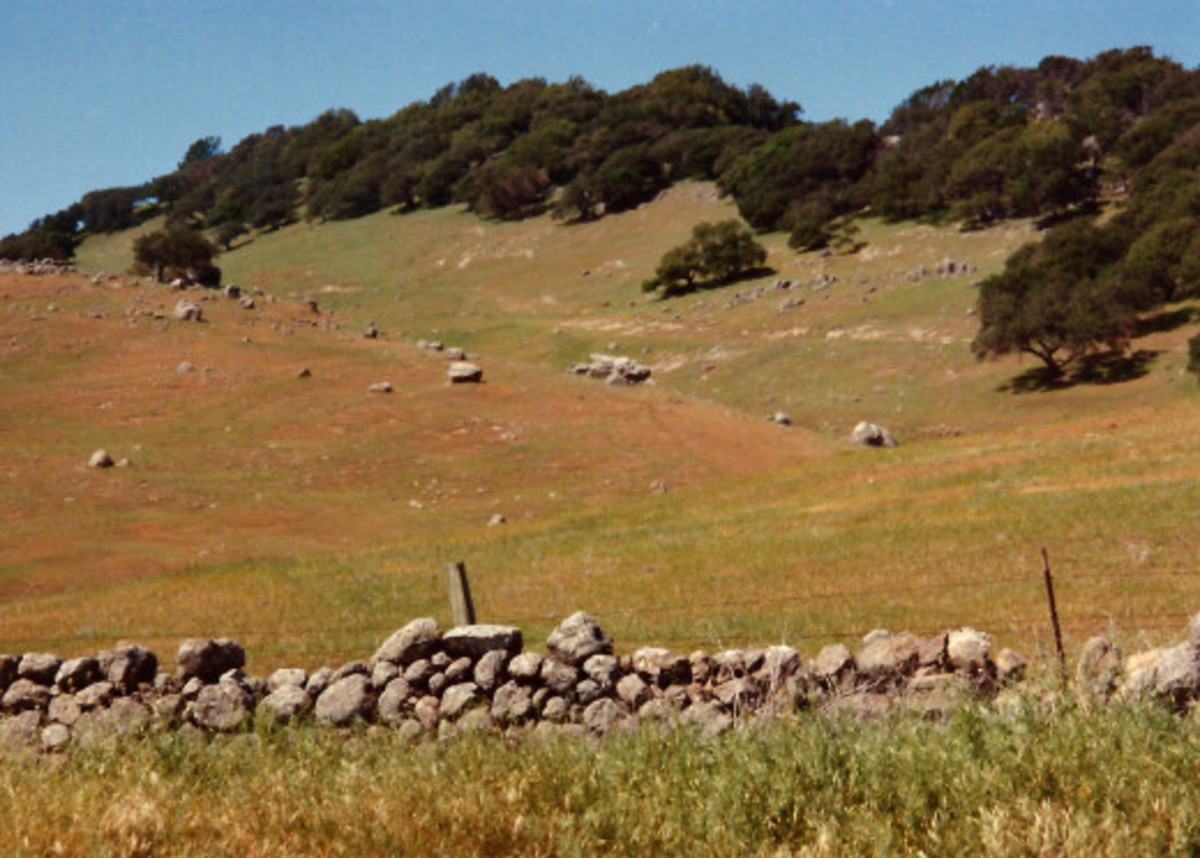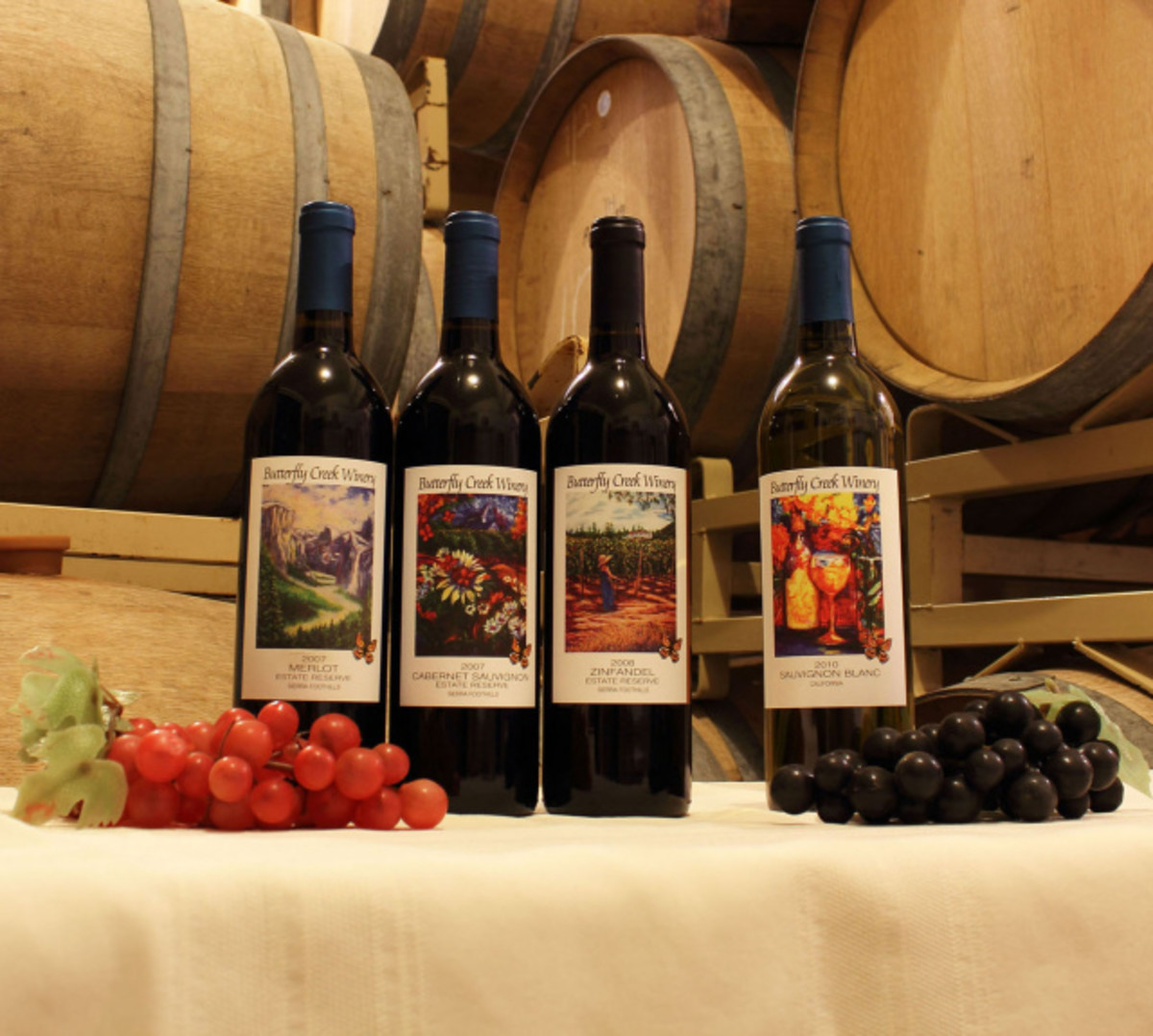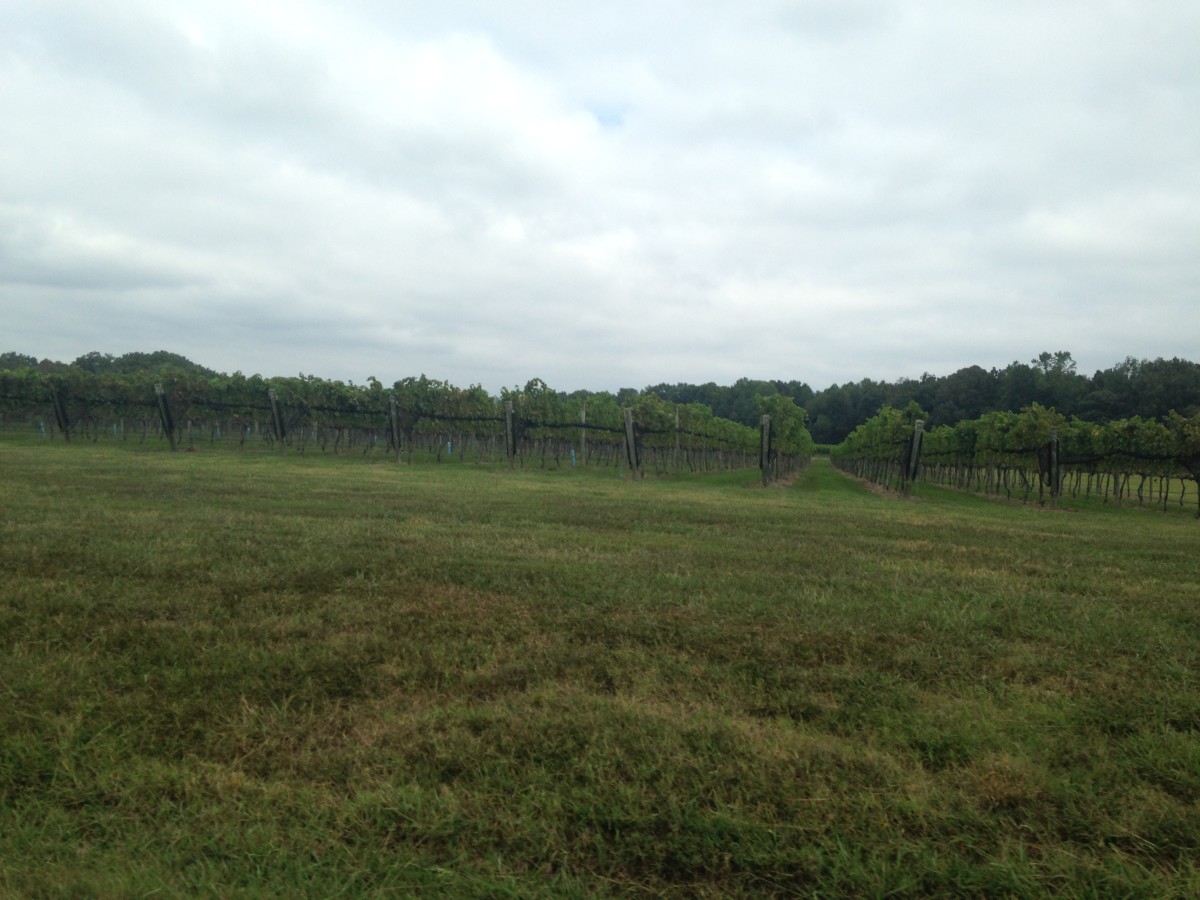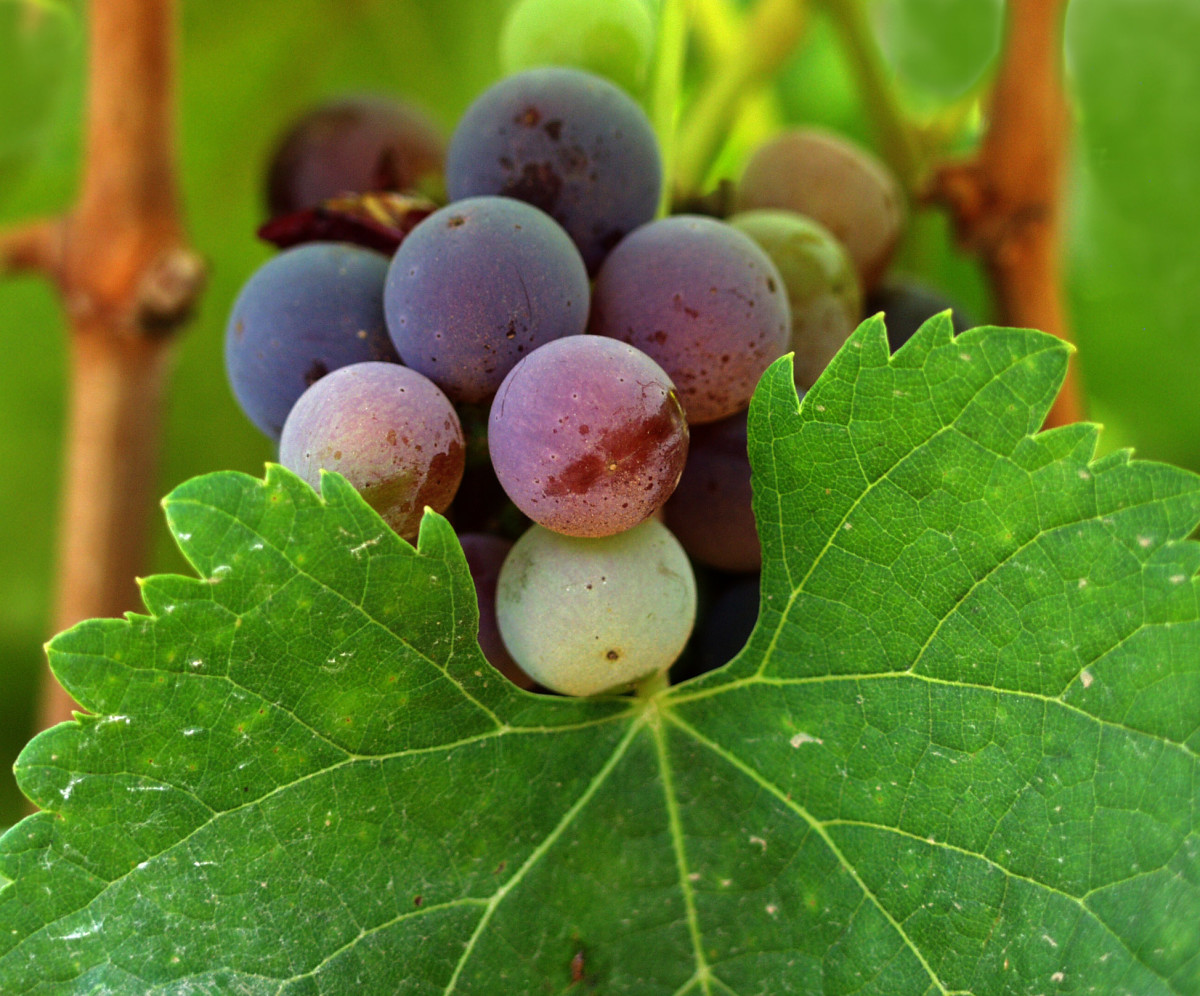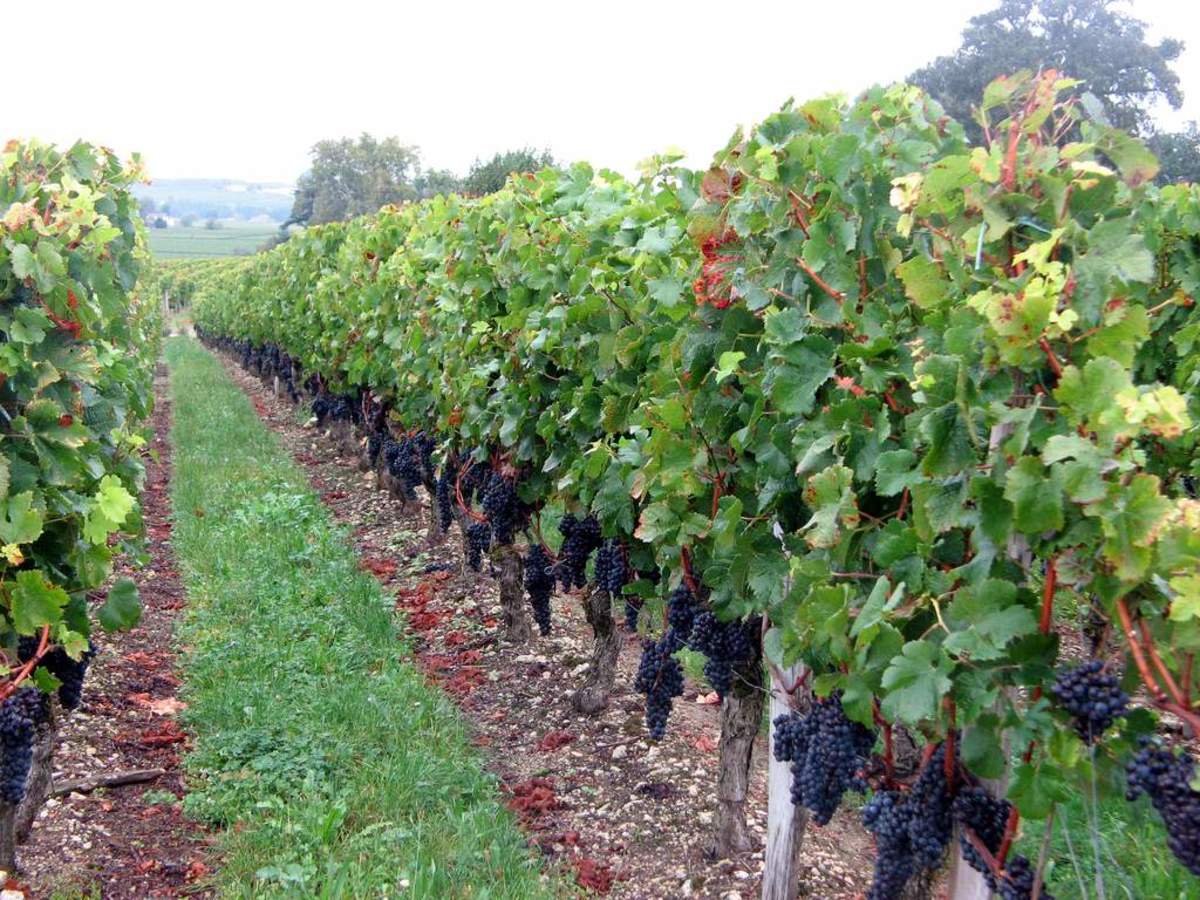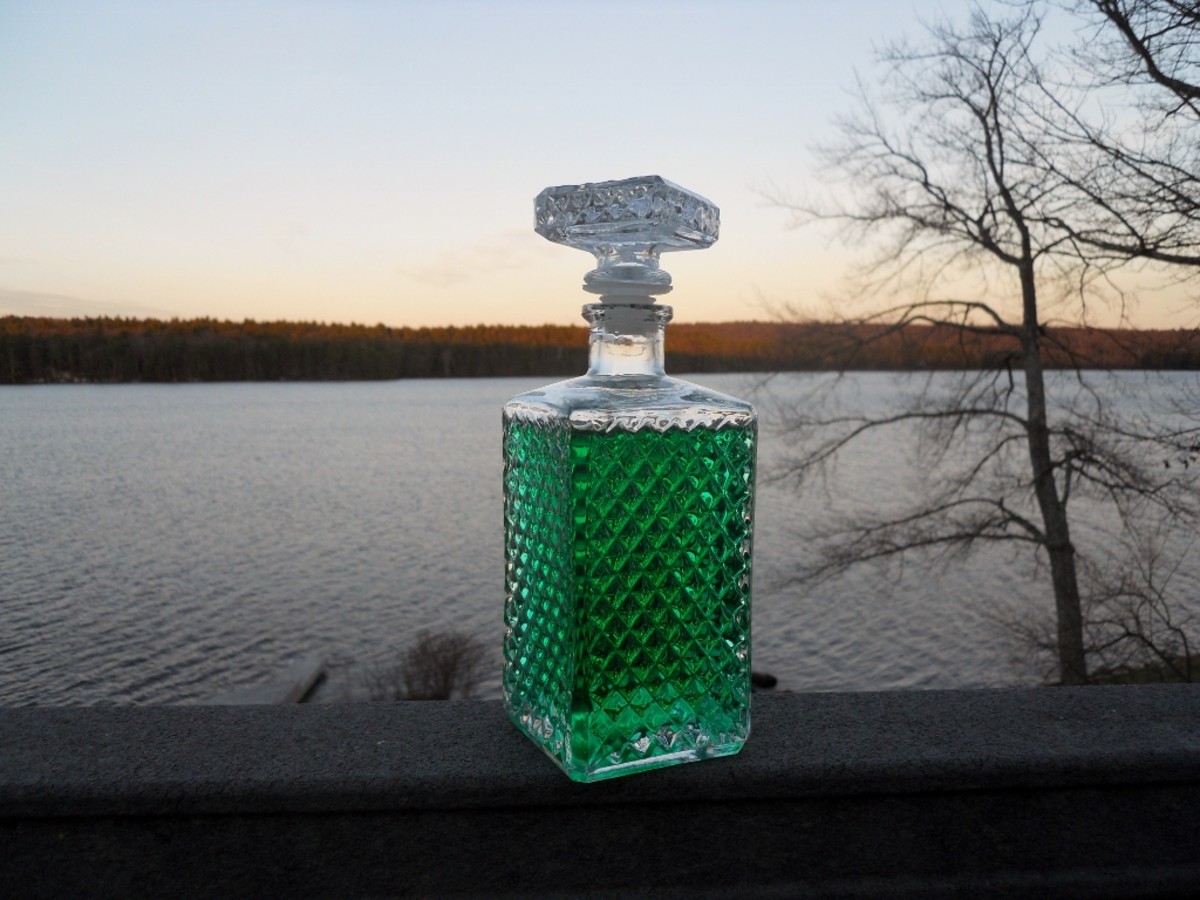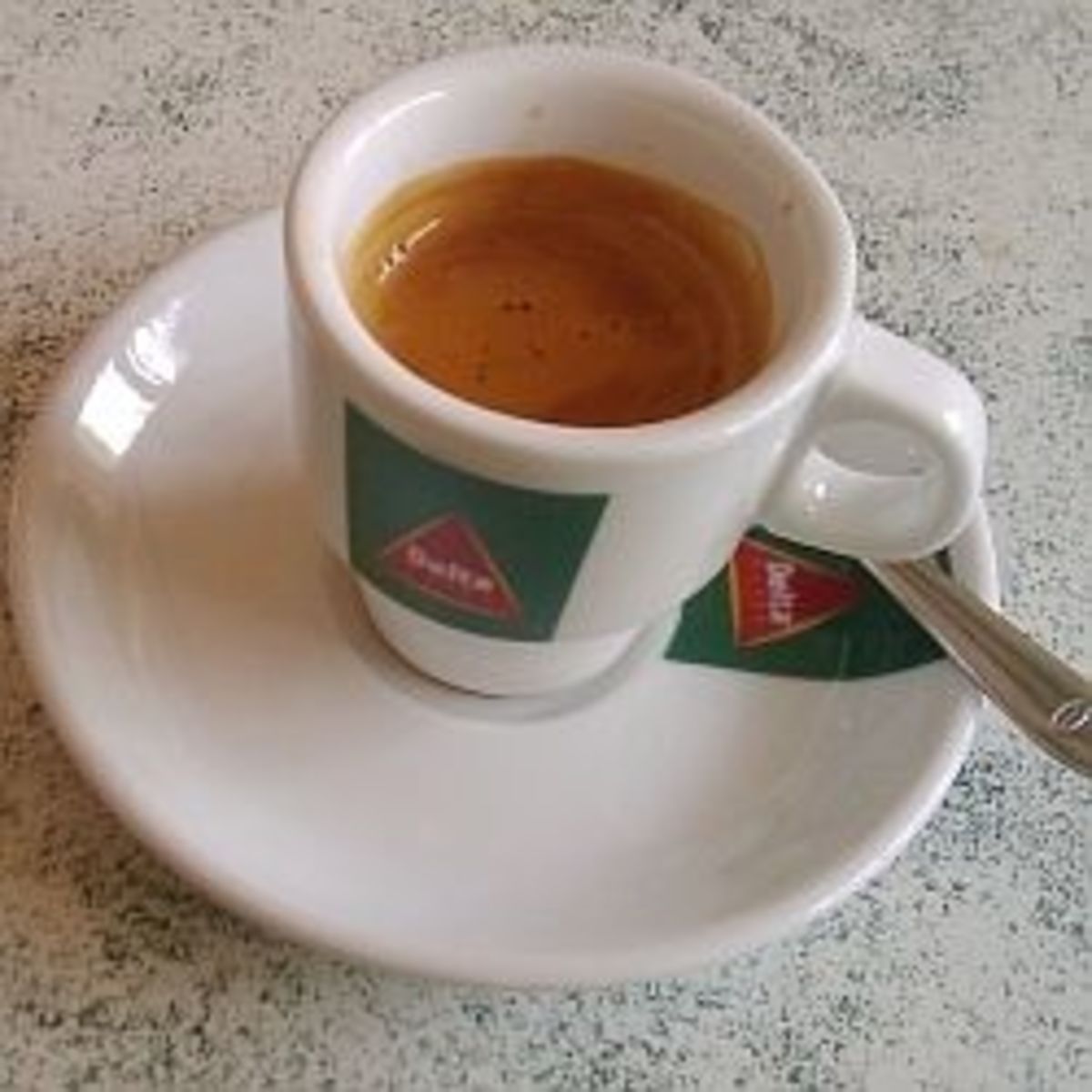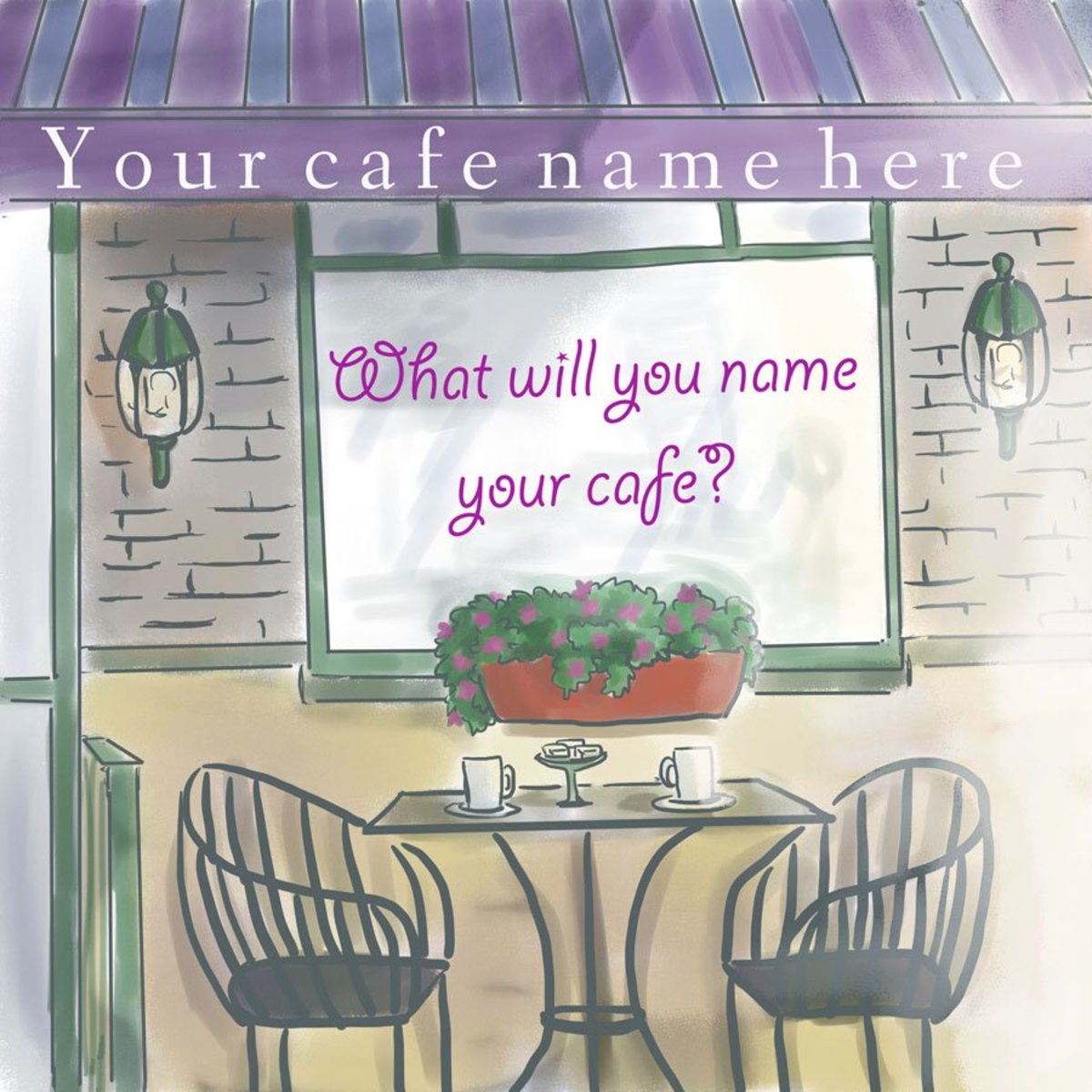Wine...One of the Olderst Drinks and Getting Better
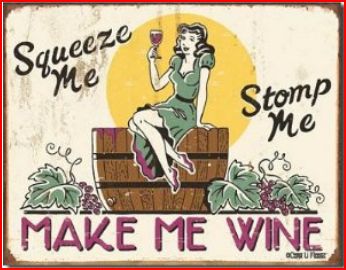
Wine Is Universal...Loved by All
This is a sign I bought during a tasting weekend in Dry Creek Appllation. It says it all. We are about all things relating to wine, with a focus on Northern California. It's about the people, the product, some interesting things historically, and information that is fun to know.
Winemakers Bag of Tricks to Add Consistency In Wines Naturally
Tartaric Acid is a natural compound found in grapes that can be boosted to adjust acid levels.
Hidden in a glass of wine are secrets of the winemaker and with a little understanding of the winemaking process, someone, with interest in the aroma's and taste's of wine, can start to explore the winemakers secrets.
There are many compounds that winemakers use to attain a certain profile or consistency in their wines. This of course is in addition to the variables brought on my Mother Nature, such as the soil, temperatures, and rain. So, to get the consistency of a wine that customers have grown to like and expect from one vintage to another, the winemaker takes what Mother Nature gives them and adjust the wine to get a consistent profile for which a wine is known. A lot of the tools available are yeasts, blending and acids.
Acid is probably a misnomer for the average person. The word "acid" conjures up things that are harmful and akin to industrial cleaners. Technically, acids are a way of defining the pH level of a solution containing levels of hydrogen ions. Acid in foods are a scientific category of certain compounds, like critic acid in orange juice. In wine there are some specific acids that are needed to balance wine in order to get the desired profiles in various styles of wine: tannic acid, tartaric acid, malic acid, citric acid and lactic acid. Like the buttery mouth feel from a nice chardonnay; coming from malolactic fermentation which turns malic acid to lactic acid. One last point: if you ever owned a pool you will instantly understand the importance of proper pH (acids).
So let's focus on tartaric acid for this discussion because it is the most ubiquitous acid in the winemakers' bag of tricks and it is all natural.
In a given wine the profiles can be tweaked by such things as: the oak properties of a barrel, time in the barrel, vineyard management skills, how long the juice is in contact with the skin of the grape, and blending with different grape varietals. But, another all natural tweaking process utilizes tartaric acid or malic acid to adjust the acid levels in wine. The great thing about the tartaric acid compound is that it is 100% natural and is a compounds naturally found in grapes. Tartaric is the largest selling product to wineries but the winemaker always has some degree of bias in how they use any product to adjust the acid levels in wine.
Interestingly, grapes harvested for wine are also harvested for the manufacture of tartaric acid. Bottom line, not all wine grapes go for that favorite bottle of wine. Big producers of tartaric acid source grapes grown in Italy, France, South America and Australia. Today the Chinese have a synthetic tartaric product that is mostly used for commercial applications such as cosmetics, building industry and manufacturing.
Tartaric acid is probably the biggest seller for the wine industry and cost from $2-3 per pound in volume. Because it is dependent on the price of grapes each harvest season, there can be large swings in the price of tartaric acid. If you are a hobbyist winemaker a pound of tartaric acid can cost you $10 per pound.
That next great glass of wine you drink that doesn't make your jaw tighten up with the characteristic feel from high acid, think of tartaric acid or malic acid. Whether you really appreciate it when consuming a wine, you do appreciate tartaric or malic acids when you smell the wine and have that great taste and feel the wine in your mouth.
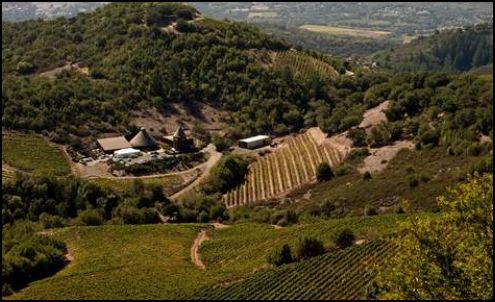
Experiment With Wines From Grapes Grown At Higher Elevations
Some AVA/Appellations are at higher altitudes and grapes are different up high!
I have long wondered why people in the wine industry, especially within a specific region of wine country, would spend hundreds of thousands of dollars on research, surveys and fighting the Feds to get a patch of ground designated with its own AVA. Obviously, the short answer is to add a heightened element of branding to the wines produced from a specific region. But this explanation begs the question: How many wine consumers purchase wine based upon a specific AVA? How many go to a wine merchant and say, “I am looking for a nice bottle of “x” from Atlas Peak AVA or Knights Valley AVA, any suggestions”? My guess is very few.
A year ago I heard about work being done to determine the impact elevation (which is a significant consideration in defining an AVA) has on wine grape varietals and wine structure. An expert in this field of study is Professor Gregory Jones-PhD from Southern Oregon University. In my opinion he is the eminent source on this subject because he has been all over the world studying elevation, climate, atmosphere and soils and these impacts on grapes and wine. Ultimately, he advises what grapes grow best at various latitudes, elevations and climates relative to a desired wine profile.
“Wines from grapes grown on a low lying valley (versus a mountain valley) floor are different than at a higher elevation,” says Dr. Jones. Napa Valley AVA elevations (and its 15 sub AVA’s) run the gambit from approximately 100 feet (the valley floor) to 2,200 feet at Howell Mountain AVA. The newest AVA (American Viticulture Area) in Wine Country is Moon Mountain AVA in Sonoma County and most vineyards in Moon Mountain AVA are planted at 2,200 feet. “Mountain valleys make for some very special wines,” noted Jones. “Rhone varietals are a grape that does well at higher elevations.”
What makes higher elevations conducive to some grapes? The short answer is: rocky soil that stresses the vines, better drainage, and variables in temps at key growing times, moisture, breezes that keep fruit dry, make-up of the air and the sun’s radiation is more intense. These primary features of higher elevation produce fruit with smaller clusters, less juice in the grape and thicker skins that produce more intense flavors. Dr. Jones commented about fruit grown in Chile and Argentina where there are vineyards in the 2,800 to 7,000 feet elevations in the Southern Hemisphere. This is specifically the case in the Mendoza region of Argentina. “But remember, mountains are different by location on the planet,” commented Jones.
Night time temps also do well with different grapes. For example, Chards and Pinot Noir grapes do well in cooler nights which are common in higher elevations which are common in mountain valleys. Warm nights on the valley floors are good for Cabs and Merlot grapes.
Dr. Jones seems to focus a lot on climatic consideration for the success of vineyards at higher elevations in North America. For example, he says mountain valley areas experience inversion temperatures in the spring and fall; known as a “thermal zone”. Inversions are when temperatures may be warmer at elevation and cooler down the mountain as cool air falls. “Heat accumulation does dictate ripening,” said Jones.
Breezes are the next attribute to mountain elevations. Breezes tend to move up the mountain in the morning and down the mountain in the evening which keeps the vines drier. And that is good.
Aside from temps in mountain areas, higher elevations add a new dimension to mountain vineyards-called atmospheric density. A vineyard at say 7,000 feet has less oxygen content, less carbon dioxide and nitrogen. Further, as we said earlier, radiation is more intense at higher elevations. Vines are no different than any other plant, it need carbon dioxide to grow healthy fruit. A lack of carbon dioxide will stress the vine and produce small and more intense fruit.
Bottom-line, the question for wine consumers: Why look for wines produced from grapes grown at higher elevation AVA’s? There are probably three good reasons:
• If your palate is developing then it gives you a better experience and understanding of appellations in various part of the wine world. Maybe you will like that type of wine?
• Profiles of some of your favorite wines are amplified when tasting that wine from a different growing environment. For example, Syrah’s from mountain grapes tend to be more peppery.
• It is part of the wine experience; trying wines from vineyards and winemakers who have taken a different path.
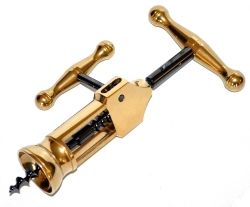
Corkscrews Maybe Be Old But New Ones Keep Coming
New take on an old design
A corkscrew is not in the same category as rocket science. But its earliest beginnings came from the mind of a recognized genius. In the 7th century BC Archimedes developed the screw to move water. And technically, the ubiquitous corkscrew is derived from that screw concept. There are records that show this basic invention was used in 450 BC as a method of squeezing grapes and olives-hence the wine press. It wasn't until 1795 that a patent was issued in England for the official device called a corkscrew. Cork used to seal wine bottles came about in the late 1600's but cork was used for sealing jars much earlier.
When you are a guest at someone's home and wine is served you will see a multitude of corkscrew designs and operating mechanisms. These are fun to operate and be intrigued by various designs. Nonetheless, there are some really nice designs that elevate the corkscrew into the category of a lifestyle item. Two that intrigue is the carbon fiber hi-tech type and the King model geared corkscrew.
Recently I discovered a very unique corkscrew. It is unique because of its design features. It is an exact reproduction of an 18th century design based upon a rack and pinion mechanism. Expensive yes, but sure to turn heads at your next function. It is called the King and can be purchased for around $250 and comes in brass or stainless steel. A hand-made engineering masterpiece.
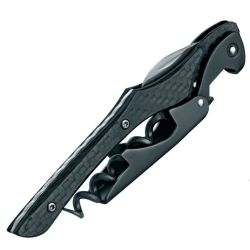
Wine tasting should be just that..
A crowded, circus environment is not the place.
I just did a lens post about some of the things that can and often do impact the taste of wine, sometimes from one bottle to the next of the same vintage/varietal. This prompted some discussion about wine tastings; organized and at wineries.
If the atmosphere, food, company (i.e. friends), surroundings, music, or even environment temperature can impact the taste of wine, are you going to get a good read on a wine from a tasting room environment? Many times when I take friends for wine tastings in Wine Country I chose wineries based upon time of day, uniqueness of the winery, their history in producing a given wine and the friendliness of their staff. I resist crowds, tour buses, banners, roadside sign advertising tastings and pricing wine sips. Staff that bounce from one customer to another, up and down a long "belly up to the bar" setting, I always suggest we leave; we are here to experience a new wine we may find and buy. There will be questions, so don't rush me but please sell me.
Wine is a living and breathing thing so respect life and try to make the best out of a tasting experience. It may not be the best way to experience a wine but it is probably the best of a bad option.
Why the taste of wine can change on the palate
Wine never taste the same at home as out in public-why?
Have you ever been to a wine bar or restaurant and decided to try a wine that was available by the glass; a wine you had wanted to experience without committing to a whole bottle? Maybe it was a wine someone recommended. Or, you found a wine you really like--the aroma and taste that was unexpected. Then at a subsequent next trip to your wine shop or Costco you bought the identical vintage produced by the same winery. You get it home, lit the candles, and broke out the same cheese and bread you enjoyed at that memorable tasting, only to be thoroughly disgusted that the aromas and taste of the wine was not what you remembered back at that restaurant or wine bar when that ah-ha moment hit.
About every other week I go to wine country and San Francisco to make sales calls and when possible I visit the Ferry Plaza Wine Merchant in the late afternoon to get the feel for what’s new in wines. Because they have a large selection of wines by the glass I get to experiment. Recently I tasted (by the way they are not cheap) a Zinfandel with some cheeses and bread and really enjoyed the flavors of the wine. I was so impressed with the Zin, I bought a bottle of the Zin on the spot, along with the cheese and bread and went back to the hotel to continue with the wonderful tastes. Guess what? It was not to be replicated, even within a few hours. What happened?
To try and figure out what happened I contacted my go to Master of Wine friend. I explained in details of the dilemma I faced relative to my experience in the change of taste of a nice wine in a wine bar (a public venue) versus my hotel room. My question was: What happened to the wonderful experience between the Ferry Plaza Wine Merchant and my hotel? It has probably happened to all of us; a nice wine experience at a place and point in time that is not replicable later in a casual home setting. So I will attempt to coalesce what I learned on the subject into some semblance of an orderly explanation.
It appears the taste and pleasant reaction to a wine is affected in 4 ways: psychological, physiological, properties of the wine itself, and environment or settings. There might be iterations of these or even a whole new category but let’s focus on these because these seem to explain why wine taste different when consumed in a public setting versus at home, even with similar/exact accoutrements (cheese, bread, and grapes, etc.). The following denotes the issues in each of the categories that can impact the taste of wine, in various venues, that is identical in vintage, varietal and winery.
Psychological
- Attitude plays a critical role in how we approach most events. Back to the Ferry Plaza Wine Merchant experience. I noticed some people were drinking wine while they waited for their ferry to board for destinations across the Bay; they simply were in no hurry-laid back attitude. Others went through the motions of having a perfunctory glass of wine without concentrating on anything to do with the wine itself. It is probably difficult to replicate a specific wine experience if ones attitude is not consistent, and it rarely may be.
- Stresses obviously impact attitude--stresses of the moment or the ebb and flow of residual stresses of daily work routine. Don’t forget stress impacts us in physiological ways, which impact how we process taste profiles and aromas.
- Wine seems to be a conscious drink best enjoyed with a clear focus. Are the aromas, color and taste approached with positive anticipation or casual appreciation? The mind forms the definition of the experience of that wine-even the exact wine you are trying for the second time.
- We also approach wine with a preconceived expectation. Any variation of that, for whatever reason, we set ourselves up for a disappointment in an attempt to replicate a given wine experience. Seems like nothing is repeatable.
- Relaxation is critical and there are degrees of relaxation. A relaxed state of mind opens the senses of smell and taste and regulates how wine is perceived.
- A Master Sommelier told me about an occasion when a middle age couple came into his restaurant and when seated it wasn’t long before an argument ensued. He said he was concerned because a pleasant meal will dictate how the restaurant is judge by patrons. “At that moment it was imperative that I try to defuse the situation,” he said. Yes, even sommeliers are aware that psyche can direct a person’s attitude about wine and food, even over the course of an hour.
Physiological
- Supposedly 90% of taste comes from our olfactory sense. If anything changes the way we perceive scents around us, taste will change also.
- Nothing is constant except change. Therefore, the chance of accurately repeating the utopian wine experience is by definition difficult if not impossible because our bodies are in a constant state of change.
- The tongue is going to tell the brain how to process the taste of wine. If the taste buds change from one tasting to the next, differences will be recognized. Too much of a good thing is a recipe for failure. That goes for wine also because the tannins and acids will negatively impact taste if they become burned out. Taste is subjective, so technically taste is always truthful.
- Age of the consumer will also impact how wine is experienced. Although we are focused on why the change in taste, over a matter of as little as 60 minutes with a change in venue, if you wait a year to experience that exact same bottle of wine you could be disappointed based upon age factors.
Properties of the wine
- There may be different batches of the same vintage that will impact taste slightly. The time of day that a specific vintage and varietal was picked and process can impact the wine from bottle to bottle. The fermentation tanks themselves can add some subtle differences and even the oak profile of the barrels between barrel vendors.
- The time and distance one case of wine travels versus another of exact vintage/varietal makes a difference (remember the movie Bottle Shock) or was a different case exposed to heat?
- How long did your special wine breath that produced that great taste you are now trying to reproduce? Remember, you are trying to find that magic in a bottle all over again; hard to do.
- Did the wine temperature change between your great bottle of wine versus the one you bought hoping to find that magic all over again? Temp is a critical element in your attempt to match the flavors, even within same vintage, varietal and winery.
- Now ask yourself if the vintage has aged in the bottle from the first time you experienced the wine.
- There could be some smells from a “corked” bottle of that same vintage and the winery due to cork contamination.
Environment
In attempting to duplicate the same great taste of a wine you experienced at a wine bar versus being at home, the environments are different. The environment is recognized as an important element in the wine experience.
- Temperature in the room will impact how you perceive the wine you are drinking.
- Sometimes even subtle difference in the way wine is stored can impact taste, even if the wine is the same vintage and from the same winery.
- Like golfers that repeat a routine/ritual, when trying to achieve the maximum pleasure from a wine, be consistent in a ritual you go through in tasting the wine: letting it breathe, not overly handling the bottle prior to opening, and decanting.
- Where were the wine glasses stored? New cabinets (if wine glasses are stored in a cabinet) may still have a wood smell that will linger on the glasses. It is suggested they be rinsed and dried and let air out to eliminate inherent cabinet smells.
- Lighting of an environment will set a mood that can change the way wine is appreciated. You don’t need a mood ring but just be aware how lighting will even change the look of a nice wine in the glass.
- If you are trying to reproduce a flavor you previously got from a nice wine, the food must be the same. For the sake of this discussion, we are assuming identical cheese and bread.
- We said earlier that smell drives taste so in your environment what aromas are you sensing and are perfume scents present? Some tasting rooms will ask people to leave if perfume is too strong.
- As a penultimate statement: The recommendations of a friend or sommelier will definitely set you up relative to what you will expect in a wine. So don’t let people dictate your standards in taste.
- Music. This is a subject that has received some research over the past few years. In a 2011 article in the British Journal of Psychology, it was reported that wine taste better with music. Adrian North of Heriot-Watt University in England said, “The research… considers the possibility that the emotional connotations of music may be able to function as a symbol that influences perception of wines’ taste. The results reported … indicate that independent groups' ratings of the taste of a wine reflected the emotional attributes of the background music being played while they drank the wine.” The connotations he is referring to are such descriptive attributes as: bold, zingy, light and airy, well developed, etc., being applied to the wine. Mind you, he is talking about people subconsciously interpreting music characteristics and using those characteristics in describing the wine they were drinking, especially if they like the music.
Relative to the two bottles of wine that started this whole discussion; the first one you tried and fell in love with and now the second identical bottle you are expecting to be the same and isn’t. We have discussed a lot of reasons why the second identical bottle is not going to totally give you the same stimulation of taste profiles. But, had you ever given any thought to “music” as a component of a wine experience; in private or in at a wine bar?
It is almost impossible to replicate the taste of wine from one bottle to the next identical bottle, even if the wine is the same vintage, varietal and winery. There are simply too many factors that come into play that can and will impact flavor. The old adage is: you can never recapture exactly what once was.
Cheers!
30 Years and Still On Top-Circa 2006 California Wines Won Again
This isn't new news just revisiting some fun facts.
I recently revisited the facts surrounding the "1976 Paris Tasting" in which an American (California wines to be specific) Chard and Cab won top honors when compared to French white's and red's in a blind tasting. Not as well reported, but nonetheless significant, was the 30th Anniversary of the original event.
This time the French were not as willing and cocky about their chances to win in a new round of blind tastings. In fact some even lobbied for the event to not be a blind tasting. Further the French wanted a different set of rules to apply to their wines. Anyway, in May 2006 the re-enactment of the original 1976 Paris event was held in Napa and Europe. The outcome was to be redemptive for the French wines. After the finally tally of the combined scores, the California red's captured the top 5 spots. The finest red was the Ridge Vineyards 1971 Monte Bello. The younger reds and white's were also examined (but not judged in blind tests) and again Ridge Vineyards came in first.
I mention this somewhat overlooked fact that has been generally received with deafening yawns because it is something to be proud of and can evoke confidence when buying California wines versus French. (If confidence needed to be any more stronger.)
Recently I visited the Ridge's winery in Dry Creek and I have been taken with the size and scope of the Ridge operations. They are huge in the Santa Cruz Mountains and very large in the Sonoma Valley.
So make a point to stop in and see these people who are turning out some great wines.
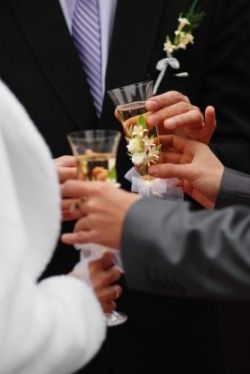
Why Has Wine Been The Drink Of Celebration
Wine has been used to toast friends and royalty.
I occasionally look for reasons why wine is so intrinsically linked with celebrations and social events; more so than any other drink. Wine's place in history seems to have always been right in front of our eyes. Even in earliest recorded history, wine seems to have many fans-from royalty to the common man.
I grew up in a home that would be defined as teetotaling, based upon religious beliefs. Nonetheless, I could never really accept what appears to be a "teetotaler's paradox". For example, here is the rub: Was not the first miracle in the New Testament the turning of water into fine wine at a wedding celebration? Also, the Last Supper had wine with the meal. Again, in this example wine was consumed in the context of a celebration. In total there are more than 235 mentions of wine in the Bible; and yes some are admonitions about abuse of strong drink.
Over the years I got over this conflict in logic, but I continue to ponder how wine has become a drink associated with celebrations, of welcomes, of friendships and even something to be enjoyed as a quiet moment of self reward. Great people through the ages talk about wine with awe, reverence and as if wine had/has mystical qualities. Ben Franklin and Thomas Jefferson were absolutely in love with all things wine and even seemed to be inspired by wine. During my years in the Navy I participated many occasions of festive recognitions with the ceremonial toasts using wine. There are even books written on the etiquette of toasting. We see wine used all around us; everything from state dinners to a casual meeting of friends at a dinner party. It isn't unheard of that a teetotaler may raise a glass of wine for a toast without drinking the wine.
But the question still remains: How did wine become so recognized as a celebratory drink?
Any wine commentary with attributions before say 5,000 BC becomes somewhat meaningless to me. Just for the record however, there are indications that grape vines have been discovered in historic carbon dated digs going back 60 million years. Vines are not wines, so let's move on. Wine as a fermented beverage starts at about 8,500 BC following the first fermented beverage which was mead and beer. "As cultivated fermentable crops, honey and grain is older than grapes, although neither mead nor beer has had anywhere near the social impact of wine over recorded time," says Tom LaMar a wine researcher. From what I can determine, the first recorded vineyard and wine production can be attributed to Noah following the Great Flood. Thank you Noah.
Probably Egypt and Mesopotamia (due to the commercial route facilitated by the Euphrates River) were the first to develop a great appreciation for wine. There is evidence that royalty found favor in wine and used wine for social events and trade. Some say beer and wine consumption was the outgrowth of poor water quality; however that may not be totally true as peasants did not have much access to wine or beer.
The Greeks, being great world traders about 1,600 BC, are credited with bringing wine to more markets. After discovering the medicinal values of wine, wine was celebrated for its therapeutic values along with social values which have been commented on by great Greek thinkers like Plato. "No thing more excellent nor more valuable than wine was ever granted mankind by God," Plato-400 BC. But, it was the conquest of the Romans that stepped up the trade in wine all over their empire. We all have read enough about the Roman Empire, including the findings in Pompeii, to know the Romans treasured their wine for celebrations.
From a historical perspective it is believed wine may have been around for approximately 10,000 years. It must have been a very pleasant drink in its most early existence because it survived a rather hostile environment-considering fermentation techniques, containers, heat, etc. Folklore indicates that a young Persian princess, in a fit of depression, attempted suicide by eating rotting grapes. To her surprise she found fermented grapes tasted good, relieved her of emotional stress and left her feeling buoyed in spirit. I think that same effect of fermented grapes can hold true to this day! From these humble beginnings many empires have found great value in wine, even establishing wine trade; from the Greeks to the Romans to Western Europeans. So, we know wine had great perceived value.
From the Bible we know man has been instructed to look at wine as part of festivities and celebration. Even the Old Testament instructs that there is medicinal value to wine. In fact science has been researching wine aggressively since 1954 when Dr. Jack Masquelier started doing wine research relative to health. As an aside, there are more than 300 compounds found in wine and others yet to be discovered. Seems science likes wine.
The complexities found in wine continue to keep the mystery of wine thriving and add to the romance of discovery. Even the fact that wine comes anew every year makes it magical. Maybe because wine is crafted in art and science, orchestrated by Nature, this adds to the pedigree that is totally wines'.
I conclude wine has maintained its personality and value and allure in societies celebration over the past 10,000 years for the following reasons:
- Wine manages to impact the senses like no other fermented beverage. There is a mystical color that captivates our sight. Wine has very complex smells. The tastes of wine runs the gambit of spices, smoke, leather-and the list goes on. Part of the taste is driven by tannins and acids. Even the sound of pouring wine is pleasant to the ear.
- Wine is precious. It is created in and of the land, which is traditionally a humble existence. This is part of the pedigree that makes it precious--handmade.
- The academic side of wine has been documented since Biblical times and re-enforced in subsequent cultures. Mr. Jim LaMar wrote that wine is a most "democratic beverage"; probably because it is available for the masses to enjoy the same as royalty. It is well researched and science continues to improve wine.
- Tradition and classic cultures have kept wine as a social and celebratory drink.
- The complexity of wine enhances the enjoyment of food and food is always part of celebration.
- The alcohol in wine stimulates and can be relaxing and these factors always are part of a social atmosphere.
- Lest we forget, wine has health benefits-'here's to your health' is a toast often heard at many events.
- A wide variety of wines satisfy most any palate at an assemblage of people with various levels of wine experience and background.
- The last factor that I think has made wine an enduring beverage of celebration and social gatherings is its mystery; not even the most educated amongst us can explain.
Some traditions don't last from one generation to another. Even some celebrations don't survive over the millenniums. But wine has survived the test of time and still holds people in its grasp when it comes to celebrations, social events between friends and family, and meaningful events. For me, it works as a sipping beverage after a hard day and I just want to relax with my family.
Cheers!
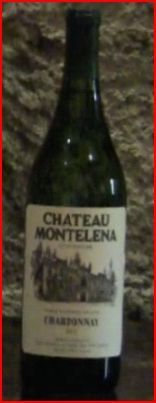
A passing of a real legend
James Barrett-March 2013
This past few months has been tough. A friend of mine died in a car accident in Wine Country in December. Mark Heinemann was a great guy with a willing heart to help out. He worked for Demptos Cooperage and knew more about wine barrels than I could get my head around. And he knew the wine people of Wine Country and seemed to love them all. But, another legend that just left this Earth on March 14th at 86 years of age for better vineyards, is James Barrett.
In 1976 I was working for TWA as a marketing executive and was just getting into wine. That particular evening I was getting ready to commute home and had the unread NY Times under my arm and had just settled into my seat on the train and caught the headline: Judgement In Paris Tasting won by 2 winemakers from Napa. The Chardonnay selected as the best of all those from France was from Chateau Montelena. The winemaker was James Barrett. Mr. Barrett accomplished this after buying an old winery in Calistoga in 1973 and restoring the winery. Then producing a winning wine in 3 years. Amazing.
That was exciting to me because having spent a lot of time in Paris with TWA, I felt the French knew they were smarter, more sophisticated and refined than any American, and much of their prestige was built on the wine culture and the arts-mind you these are/were symbiotic to the French.
To read about a red and white wine from California achieving the pinnacle of critical acclaim warmed my heart immensely. I relished sending an inter-company telex message to our offices in Paris asking: could there possibly be a mistake in a blind tasting conducted in Paris by all French judges!? Heaven forbid the French had lost their touch, not to mention their self-esteem.
Mr. Barrett did the impossible with a white wine. Prayers to his family and the company he made into a real fine winery that made us all proud.

Drink to your health, literally
More new facts on health benefits of wine.
Mike Wallace once said, "All I am armed with is research." If you are going to live by research you best be prepared to change your life style on a moments notice. Then what about your opinions, because research findings are subject to change? I can remember a time when drinking any wine was bad for ones health. Recently there was some concern about wine consumption and breast cancer. However, in the 'Journal of Women's Health' in 2012 it was reported that women who drank wine showed a reduction in estrogen levels. Estrogen has also been reported to be associated with the risk of cancer. In the 'FASED Journal', they report that red wine may reduce cancer risk because of an antioxidant known as resvertrol. So you ask, what is the point? Point being, keep and open mind to all research.
Now for the latest research on wine from the 'Journal of Functional Foods'- 2013. From Hebrew University of Jerusalem, which is also doing a lot of research on viticulture, comes a study that indicates drinking red wine can ward-off cholesterol build-up resulting from eating red meat. The harmful compounds found in digested red meat form in the bloodstream, creating the bad cholesterol. Research has shown the antioxicants in wine known as polyphenols prevent harmful compounds from attacking/forming in the arteries.
Professor Ron Kohen, from the university took another look at the process of wine's benefit on cholesterol and conducted a study on two groups of people: one group was feed turkey cutlets (primarily dark meat) and the other got the same diet but with red wine. After four days of eating the turkey cutlets, the levels of modified cholesterol had increased by 97 percent in the non-wine consuming group. It is thought that such modified cholesterol is responsible for hardening arteries and creating plaques that lead to heart disease. In the group that eat the cutlets with red wine, their levels of modified cholesterol did not change and even fell in some cases.
"This may help to explain why red wine has frequently been found to reduce the risk of heart disease. Meat is rich in polyunsaturated fat and cholesterol. Our results could provide an explanation for the association between frequent meat consumption and increased risk in developing cardiovascular diseases. Including polyphenol rich products as an integral part of the meal significantly diminish these harmful effects," said Kohen. Knowledge is power.
Just wait till tomorrow there will be another study that comes along and present some new facts. Now we must define what facts are.
Cheers!
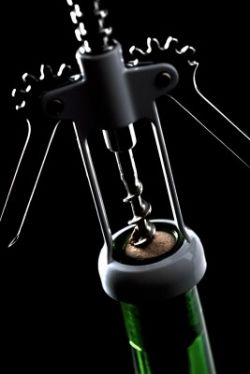
A WS or MW are experts you should get to know.
The people can help you understand wine.
Can you explain what a Master Sommelier (MS) or Master of Wine (MW) means to wine lovers? If you have a cursory understanding of what a MS and MW designation means in the world of wine, but certainly not enough to be conversant, let's take a look at this topic. In wine, a person with a MS or MW after their name is the equivalent of CPA after the name of an accountant. The CPA is important to most of us at tax time but the MS or MW can be useful all year long.
There are basically two highly respected organizations that award designations to individuals who can demonstrate a high level of expertise in all things wine. However, each of the two has a focus that is significantly different in approach to wine. One focuses on the serving of wine in a culinary or restaurant environment, while the other has a more traditional approach to wine and its heritage (the art, science and business of wine).
In respect to the elder of the two organizations is the Masters of Wine. The ruling body of this title is The Institute of Masters of Wine. A Master of Wine, as defined by the Institute, is "someone who has demonstrated, by way of rigorous examination, a thorough knowledge of all aspects of wine and an ability to communicate that knowledge clearly". Currently there are approximately 300 such titled individuals around the World with 31 in the U.S.
The origins of this Institute can be traced to the mid 1300's in London when organizations were formed around various trades (known as- Livery Companies) e.g. goldsmiths, fishmongers, tailors, and wine. In the beginning there were only 12 designated Institutes. The Worshipful Company of Vintners (wine merchants) was one of the original 12.
From this old and honorable organization came the understanding that there needed to be a formal education that resulted in certifiable standards of wine knowledge. Granted it took many centuries. Nonetheless, in 1953 the inaugural award of Master of Wine came into being in the UK. Of the 21 individuals sitting for the exam only 6 successfully passed a process which involved 5 papers on theory and 3 practical papers (one was on analysis of faulty wine). By the way, the first woman was awarded the MW designation in 1970. The first Master of Wine was awarded to 2 individuals from the U.S. in 1990.
Today, after 2 years of intense study, the Masters of Wine final exam comprises four-3 hour sessions of questioning on-viticulture, winemaking, wine business and relevant issues confronting the wine business. Part two involves three blind tastings of 12 flights of wines each followed with a written paper on all elements of each of the wines. Finally a 10,000 word dissertation must be delivered and defended before a board.
You will find Masters of Wine to be involved in such areas as wine education, wine imports, and food industry and winery companies.
The second title of professional status in wine is that of Master Sommelier awarded from The Court of Master Sommeliers. The Court of Master Sommeliers was established in 1969 in the UK to encourage improved standards of beverage knowledge and service in hotels and restaurants. Today there are approximately 200 individuals who have earned The Court of Master Sommeliers title, a process that can take 5 years of formal course work and practical service industry experience to complete. Actual course work can be accomplished in a couple of years.
In 2012 there were 11 titles of Master Sommelier bestowed and 7 were in Northern California, 1 in Southern California, 1 in Seattle, 1 in New York, and 1 in Aspen. In my random survey of title holders it appears that virtually all are employed in the restaurant industry. It is important to recognize there are only 129 Master Sommeliers in the US.
With the requirement of having practical experience in the beverage industry, supplemented with the 4 levels of course work, the process to become a MS can be 5 or more years in total and cost $4,000 exclusive of wine purchases.
The job of a Sommelier is to promote wine within a restaurant setting, raise the standards of beverage services, and manage the profitability of the beverage component for a restaurant. Therefore, not all employees of a restaurant wearing a suit and delivering wine to the table are Master Sommeliers. Having gotten to know a great Master Sommelier in Las Vegas, Mr. Kevin Vogt, I have found you can get a lot of wine experiences and information from a Master Sommelier for the simple price of a bottle of wine. Ultimately, they consult with the customer to enhance the customers experience with the total restaurant (food, beverages, and ambience). Actually, wine service can be very complicated, especially when a demanding customer is thrown into the mix.
A Master Sommelier is buying and managing thousands of bottles of wine starting in the early morning and working with chefs for future menu planning to have the right wines on hand to support all menu items. Not an easy job.
There are other programs in existence that award a diploma or certificate or some kind of credential associated with wine. Another relative newcomer to the trained wine professional accreditation process is the International Sommelier Guild. Their reported costs for a complete program are approximately $4,000. The Level III course is a diploma program that includes classroom instruction. The designation for someone completing the course work is Master Wine Guild.
It appears that colleges and universities with a hospitality department use the International Wine Guild curriculum as a basis for beverage studies.
This now begs the question: Which is the most prestigious title-Master of Wine or Master Sommelier? There is some overlapping of study materials such as tasting, pairings, and winemaking. However, the most significant difference in the two programs is that the MS is more oriented to the customer interface in a restaurant environment while the MW is focused on the business aspect of marketing, importing, managing winemaking, etc. You will probably find a lot of Master of Wine titled individuals in the educational field. The Institute of Masters of Wine definitely has more history behind the qualification of Master of Wine. Both involve a lot of study time and the failure rate in first attempts is significant.
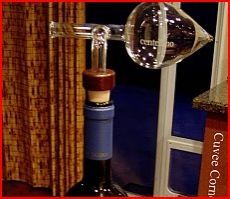
Since Man Started Drinking Wine They Wanted More Aromas and Flavor
Newest Aerator is the good ole Blender.
There are roughly 8 designs of wine aerators. Of the 8 designs, there seems to be 4 categories: bottle-top/in-neck, venture-effect, decanter, and dip tube/in bottle.
- The dip tube/in bottle aerator uses an auger system to pull wine from within the bottle and cascades the wine out the top of the tube and down the inside of the bottle.
- Another aerator is the venturi type. This system is based on a late 1700's discovery by an Italian scientist, Giovanni Venturi-called the "Venturi Effect". Today we see the Venturi Effect all around us; a spray bottle of perfume uses this principle and a carburetor. It's so simple that it is rarely thought about. Venturi type aerators operate by designing a constriction in the hand-held aerator device, this causes a low pressure area. A small hole from the side of the aerator through the constricted point will allow air to join with the wine as it passes through the constriction.
- The bottle-top or in-bottleneck aerators also serve as a pouring spout. These aerators use any number of options to mix the wine with air in the pouring process. The air/wine mixing process can be accomplished with mesh screens to agitate the wine when poured or a glass globe the wine pours through before the wine glass.
- The decanter really does not need explanation.
Sufficed to say each of these methods of aeration have their pro's and con's. A common denominator is that aerators (except for the decanter) are visible and require dexterity. But, if you find aeration to open up a wine and give it more aromas and more taste then you have probably already decided on a type and brand you like. Aerator reviews, from blind tastings, tend to be all over the waterfront. Personally, I like keeping wine in the bottle for serving, once out of the bottle you can incur waste and that is not good.
Most Master Sommelier's I know indicate they like to aerate wine because they claim it adds rich character to the enjoyment of the wine and food pairings.
Now let's add a new aerator design and category: the old fashion blender! Yup, that handy device for blending concoctions and making smoothies is now the newest and best aerator in the world!
Today a press release announced that Chef Nathan Myhrvold says the blender is the best device for aerating a nice red wine. Yes, he does recommend aerating. His claim is that aerating helps in oxidation of certain flavor compounds, vents gases, and releases volatile compounds.
Be advised that once that nice Bordeaux is in the blender you will have a hard time getting any back into the bottle, even if you wanted.
Here is a list of more prominent aerator labels in the market. They range for $8 to $49.
Centellino Areadivine (Italy)-In bottle bulb device.
Spreathe (Hong Kong)-The in bottle auger system.
Vinturi (China)-Need 2 hands. This is the most common.
Soriee (China)-Like the Centellino above it uses an in neck globe design.
AeraWine Infusion (China) - A combination aerator and pour spout.
Norpro Wine Aerator (China) - This is a relatively new design and probably came about to circumvent patents. It uses a globed in bottle neck design.
With most China products, there are a lot of knock-off's and even if there is a patent on a product the Chinese will find a way around the patent, especially if it is a design patent.
Try the blender, I will do so this weekend and test the results of the process. I guess a blender container can be classified as a carafe.
Cheers!
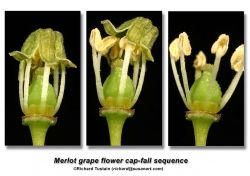
Documated prosess in the grape flower forming
Next comes the cluster
I recently wrote and article, on this lens, about the grape vine flower that few people ever see but is necessary for the cluster to form. The story was read by a New Zealander who knows wine and has taken the time to document the process of the flower forming. This is extraordinary. A lot of thime has been spent doing this photography. I thank him for his interest and effort in getting in touch with me from down under.
His name is Richard Tustain. He has been involved in the wine industry in the US and his wife happens to be a very accomplished artist who spends time lecturing in Napa/Sonoma and Oregon.
Enjoy his work, he is good at what he does and understand the vine to cluster process.
Thanks Richard.
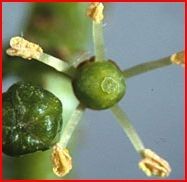
Ever See a Bloom On A Grape Vine?
Wine starts with the small flower.
Here is a question I am sure you have asked yourself…Do Grapevines Have Flowers? The answer from Stefen Stolysiak of Rodney Strong Vineyards is a strong-yes. Brace yourself for a discussion of the birds and bees.
Although you may have never seen it, every grape does start with a flower, quite inconspicuous though it may be. A wine grape flower is considered "perfect", in that the same flower contains male and female structures, and can pollinate itself. Because of this, grapes do not rely on insects for pollination (or wind for that matter), and do not produce nectar. For this same reason, they don't need to be showy, aromatic, or colorful - perhaps this is why they get so little attention!
The 5 pointed petals are merely green, and unlike most flowers which open in the center and stay attached at their bases for awhile, grape flower petals open at their bases, and the middle stays together. The result is that the entire petal structure (calyptra) detaches at its base and falls off in one piece. This exposes the 5 pollen producing male parts, known collectively as the stamens, and the single pollen receiving female part, the pistil. The end of the pistil is sweet and sticky, and this is where pollen grains will adhere to, and grow down into the ovary of the flower and fertilize what will later become seeds. Around these seed embryos is a fleshy layer that will eventually grow to become the edible (and fermentable) part of the berry that will make a future wine so delicious.
Grape flowers do have an aroma, though many people miss it even in wine country during full bloom. That's because it's a very delicate aroma that can be difficult to notice with all the other aromas of spring. It reminds me vaguely of warm clothes spinning with a dryer sheet - somewhat floral, somewhat sweet, and never overpowering. But once you become aware of that lovely, ethereal scent, you'll never mistake it again. You'll be able to drive by a vineyard and know if it's in bloom just by using your nose!
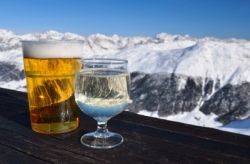
Beer or Wine-Which Is The Oldest?
Don't look back but beer is gaining in popularity.
In the middle of February I went to Wine Country (i.e. Northern California) to make sales calls at wineries and gift shops. One evening we drove to Walnut Creek to have dinner with our son and daughter-in-law; he being an IT guy for a large energy efficiency consulting firm and she being an executive for an investment consulting firm in San Francisco. Both of them know a lot about wine but enjoy beer slightly more. Interestingly, both are Certified Beer Judges and therefore attend many beer events in and around San Francisco.
All of this is to say they have migrated somewhat to the refinements inherent in the emerging complexities of beer. Yes, home brewing is part of understanding the complexities and sophistication of beer. Like wine, beer brewing is a lot of art form along with heavy science/chemistry. Appreciation does come with knowledge.
A fair question at this point of my diatribe is: What has brought this on from a guy who is a wine lover? The answer lies in an article I just read in "Advertising Age" by E.J. Schultz-Trends in Wine: Out-Innovated By Beer... The bottom-line message is, growth in wine sales in the US is diminishing; not a negative growth but just not growing like it has in the past decade.
In our company's research I think the wine industry needs to refocus their image, their message needs to become inclusive, understand if they want a diverse consumer and are they letting "sophisticates'" drive their train. For some time, we have noticed that a lot of the new wineries want to present themselves and their wines as being targeted at the upper-crust of the market demographics. Black tie wine auctions and new wineries designed by world renowned architects are the things the common man can only participate in by buying those wines. Snob appeal is the operative phrase often associated with wine.
E.J. Schultz attributes the erosion in wine sales to: lack of innovation in product development, not reaching out to the growing Hispanic demo, new and well branded beer products competing for market, and new brands are brought on by creative marketing from a new group of innovators. Said another way, it is all about community and wine is positioned as an exclusive and intimate community of aficionado's.
Bottom line, don't give up on wine. Wine is becoming ubiquitous-soon to be at Starbucks, Noobles and Company, and Chipotle. Relative to innovation, remember the time when White Zin was the real rock star of wines and then Syrah.
Back to Walnut Creek to bring closure to this story. On one of the main streets in Walnut Creek was a nice little wine bar that we walked past and it looked reasonably busy. We did not stop there because my son wanted to show us a little place just around the corner that was a beer bar. When we arrived-Wow! They were serving 25 different beers on draft, hundreds of bottled beers from all around the world and well dressed men and women were enjoying the fruits of some brewmaster's labors and were deep in conversations. It was inviting.
Not being well versed in beer, I wanted to taste and discuss the beers. The guy drawing and serving beers was warm, enthused and courteous. He was more than happy to let me sample all the beers I wanted and he was very well versed on the taste profiles of the various beers and was very patient with me. I enjoy, I learned and I fully realized what customer respect can mean in a growing industry. By-the-way, I saw a 22 oz. bottle of beer that was $48 and watched a gentleman buy it and he seemed the think his $48 was well spent.
Wine will always have a place at family tables all over the United States. I relish the times I share a meal and wine with my son and his family. Wine seems to be a respectable beverage that is complex and enjoyed even more when visiting with winemaker's at their wineries. Wine does keep us civil, indeed.
Cheers!
Wine may be ag based but it is big business
Some big names now own those once family owned brands.
Wine may be one of the oldest industries and winemaking may be the oldest profession...or second oldest profession! Inspite of all the changes over time, the industry is still in flux. Some changes are good and others prove detrimental. Prohibition is one of those things or changes that wrought havoc on an entire industry. Another one of those changes moving rapidly is how the manufacturer's (wineries) are being acquired by large consortiums. Some of these companies are quite large and have far flung reach. Constellation Wines is one such company. Mind you, these are not bad changes, but if you as a consumer are looking for the element of owner pride, this is not about that. This is about profits and playing by the corporate rules even at a local level. Again that is not meant to be a bad thing.
As the wine industry grows in America and around the World, I only want to focus on America. It is a complex industry and is even more complex when you consider the strategies that go into marketing, of which pricing is a component.
I was recently in a BevMo store. (BevMo is a Northern California retailer of spirits, wines and beers and some even incorporate a very upscale deli/cheese counter.) I was talking to a corporate executive who happened to be visiting that store. I was looking a some labels and we started discussing the changes those particular labels had gone through over the years. We started reviewing all the acquisitions of some conglomerates and the list is quite impressive. Especially in the ability of these large entities to get their wines into the market and support them with marketing programs, tastings, advertising and quality control. But still, getting grapes into wine profitably relies on a very complex distribution scenario.
There are large owners who acquire wineries, there are large family operations (Laird and Gallo to just name two), rep firms that do not own wineries but are responsible for marketing a portfolio of brands, and then we have importers. Let's just focus on the large firms that focus on wines and maybe also have a strong spirits owned portfolio and then mention some others.
Constellation is a brand that is the largest aggregator of wine brands from around the world-literally. By my count they own more than 51 brands and an additional 30 plus brands that have local distribution only. They own some very impressive labels but the most notable of all was the acquisition of Robert Mondavi in Napa.
Crimson Wine Group is a California company that owns 7 brands of California wineries. They seem to own a lot of vineyards in addition to wineries.
Banfi Vnitners has been around since 1919 as a New York firm and owns wineries (mostly outside of the US). They produce wine and import their wines into the US market from Europe and South America.
Treasury Estates owns 53 brands in the US, New Zealand, Australia, and Europe. They are big with some great brands in their portfolio such as Greg Norman and Beringer Vineyards. Recently they have also made some interesting strides forward in celebrity brands and signature wines production.
Diageo NA owns and produces 6 wines, one of which is Sterling Vineyards.
Brown Forman is another wine label aggregator that is small in the wine game and only has 1 brand-Sonoma-Cutrer. They are most know for their spirits and beer portfolio.
This is an industry with changes going on all the time; from winemaking techniques, chemistry, vineyard management, and continuing into winery ownership and marketing.
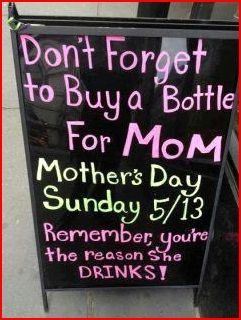
What's wrong with this picture?
Make sure you get the date right-May 12th in 2013 is Mother's Day!
OK, I know, this is a sign I saw from last year when Mother's Day was on May 13th. Be advised the day this year for Mother's Day (2013) is on May 12th. There is time to get that nice bottle of champagne or a nice Chard. This year there seems to be a lot of wineries and wine stores doing chocolate pairings with wine tastings. So add some anti-oxidants and mood altering chocolates with the champagne or wine for Mother.
Low Calorie Wine Is Around
As reported in Shanken News...Treasury Wine Estates has introduced a new low-calorie wine range, The Skinny Vine, to its portfolio. The Skinny Vine line features Slim Chardonnay, Mini Moscato and Thin Zin varietals priced at $11 a 750-ml. bottle. Sourced from California grapes, each of The Skinny Vine wines contains less than 95 calories a five-ounce serving, according to Treasury. Beam Inc.’s Skinnygirl wines ($15 a bottle), by comparison, are 100 calories a five-ounce serving.
Treasury Wines has offices around the world and in the US their office is in Napa. In North America and S. America they own approximately 15 brands that include Beringer's, Greg Norman, and Stag's Leap Winery. They also own Penfolds as part of their Australian/NewZealand collection.
Anyway, I will try their reduced calorie wine. Low calorie wines I have tried in the past come up way short on the bouquet and taste chart. Cheers.
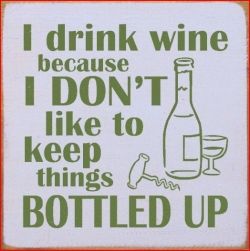
A simple thought to make us laugh.
If you can afford gas for your car you can afford wine...it is less expensive.
Coming from a family who did not drink wine, I often wonder how I grew to appreciate the work that goes into the making of wine. Oh yes, there is cheap wine. But, good wine is bountiful.
StickyNote
Sports and Wine Seem To Go Together
Take a look for your favorite sports figure in the wine business
Celebrities, in any capacity, have always been involved in the second or third oldest profession…winemaking. Whether they are celebrity politicians, sports figures, moviemakers, actors, or authors, they are probably into winemaking for reasons of prestige, financial, and/or genuine interest. I have long repeated has been said before; winemaking is really, in the final analysis, nothing more than agriculture/farming. So what makes the wine business so interesting? Probably Robert Mondavi made winemaking a chic moniker of wealth, culture and status. But, winemaking is still all about growing, harvesting and processing a fruit.
I recently read that Drew Bledsoe (NFL) has been doing well in the wine business with his own label along with his good friend Rick Mirer (also from the NFL). Drew’s label is Doubleback which is a Washington State wine. That got me to thinking about sport celebrities who were making wine in and around Napa and Sonoma Counties, California. In wine country I would probably say that the NFL has produced the greatest number of wine labels, but others in other sports are entering the fray, even in a down economy, and their wines are not inexpensive.
Some new sport celebrity entrants in the wine business do not own vineyards or wineries. Rather, they work with wineries and winemakers to produce a wine, they like, under their own labels. Others have taken the path of owning the real estate (a vineyard or winery property) and producing their own wine.
So the question that begs asking: Who are the sports figures that are involved in the wine business within the loosely defined area I have defined as wine country? My tally is not in any specific order.
Mario Andretti-Andretti Winery, located in Napa. It is a very nice winery, open to the public, who’s proud owner hails from the motor sports arena; primarily Indy car racing. Mario is active in his winery so expect to see him around the property.
Dick Vermeil-Vermeil Wines, Calistoga (North end of the Napa Valley). Dick was born in Napa Valley and is a partner with Paul Smith (a graduate from Fresno State School of Viticulture), also the winemaker. Dick’s great-grandfather was in the wine business in Calistoga. As an aside, Dick Vermeil was the star quarterback at Calistoga High School. He married Carol who was a cheerleader at Calistoga HS. The wines are Vermeil Wines from On The Edge Winery. Dick Vermeil is from the NFL and broadcasting.
Tom Seaver-GTS Wines, Calistoga. Tom is a Hall of Fame pitcher. He is an active manager of his vineyards and produces a high-end cab’s. Tom was born in Fresno, where his family grew grapes. Thomas Rivers is the winemaker for Tom Seaver’s and is the guy who has produced 2 “100 point” wines. The label is “GTS”.
Rick Mirer-St. Helena. A big fan of Napa as a source for grapes, Rick’s winemaker/collaborator is Rob Lawson. Do not know the winery that produces the wines, but they are exceptional. Rob Lawson has founded a winery and currently consults for wine companies like Rick’s label; Mirror Wines. Rick is most famous for his college football years at Notre Dame University and his time in the NFL.
Terry Hoage-Paso Robles (the Central Coast). Here is a gentleman who got his start in the NFL and today produces a premium wine. Terry and wife Jennifer own the vineyard and the winery that processes the fruit. The Terry Hoage Wines are Rhone varietals and are all organic wines.
Arnold Palmer-Napa. Mr. Palmer has a mid range white he produces with Luna Vineyards. He does spend some time in Napa but it is not his primary focus. His career in sports does not need to be noted. If you don’t know Mr. Palmer it is truly a pity.
Carmen Policy-Yountville, Napa County. Carmen owns the Policy Vineyards and produces a wine under the Casa Piena label. Carmen is best known for his front office work with the San Francisco 49’ers. His focus is really all about the fruit from a premium vineyard. Background is sports law in the NFL.
Jeff Gordon-Jeff Gordon Wines-Sebastopol, Sonoma. Jeff is active in the winemaking process and spends personal time, after the NASCAR season ends in November, working with his winemakers in finishing crush and barreling. He is a native of Vallejo, CA and has been around wine most of his life. The career that helped him get into wine is motor sports. His wine comes from August Biggs Winery.
Luke Donald-Napa. Luke works with a long time friend, Bill Terlato of Terlato Wines International to produce three wines” a Claret, Viognier and a Chardonnay. He did very well on the PGA tour in 2012. Terlato Wines owns several wineries in Napa and Luke is very hands on in blending his wines.
Greg Norman-Greg Norman Wine Estate, Napa. Greg has been making fine wines in Australia for a long time and is now producing wine from the North Coast of Wine Country. Grapes are sources from Sonoma, Napa and Lake Counties. He does have wines from other areas in California. Golf is industry he comes from prior to getting into the wine business.
Annika Sorenstam-Annika Wines, Livermore, CA. Annika left the LPGA Tour in 2009 to pursue many and varied business interests in apparel, finance, golf and wine. She joined forces with Wente Vineyards. Although Livermore is not exactly in Napa or Sonoma she is close enough. I have tried her wines and they are a result of a great collaboration with a winery with many generations of winemaking experience.
By my count there are approximately 11 sports celebrities involved with winemaking in Wine Country. If you consider former US Ambassadors, members of Congress, Hollywood moguls, entrepreneurs, etc. then the list grows quickly.
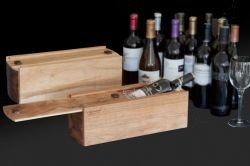
Wine Club Thoughts
Wine Clubs do not come with decoder rings...when is a club not a club?
Wine clubs come in all shapes and sizes and varieties. I don't know how long wine clubs have been around but over the past 30 years I have been a member of my share of them. The whole concept of a "wine club" seems to be somewhat of an oxymoron. In a traditional sense, I suppose a club should be something that has a social component in addition to an economic, educational or at least a value added proposition. If a person joins a golf club, a car club, or a quilting club, the motivations are social, skills advancement, financial rewards, etc. in meeting with others of like minds. But, wine clubs seem to only have an economic proposition; conveniently buying wines that are at are offered by the club's owners.
If a person joins an association like the NRA or AARP they are doing so for lobbying effects or to garner discounts. But, clubs seem to touch a different motivational nerve in membership.
Joining any wine club is probably motivated by a combination of the following reasons:
- Recommended by a friend.
- Desire to experiment with wines not normally available in your local wine store.
- Convenience, assuming someone over 21 is available to sign for shipment.
- You like surprises and the wines selected/offered that month or quarter is irrelevant.
- Reviews/technical specifics that come with the wine are helpful in such areas as food pairings.
- There is a financial value to the wines received even after shipping costs are considered.
Recently I undertook a project with a friend to catalog wine clubs in the U.S. and offer a brief description of each. The focus was to succinctly define their respective market niche, financial commitments and ancillary offerings. It was not long before we realized that the wine club market is diverse, highly competitive and targeted, and is made up of different ownership/commercial arrangements. Basically, wine clubs are a mail order business. However, as I will explain later, there are some brick and mortar operations that offer their own wine clubs-K&L, BevMO, Total Wines and most wineries. Yes, I have not forgotten about The Wall Street Journal, Wine Spectator, and Wine Enthusiast who are publishers.
The business model for wine clubs are not hard to recognize: aggregate buyers, buy in volume, find motivated sellers, define the wines at a specific price point and advertise. There are clubs for all levels and types of interest. For example, my wife recently received her quarterly mailing from a high-end club. They promote premium wines with shipments sent out quarterly. Their wine selections are approximately $100 per bottle. The problem is that my wife only enjoys whites and even those needs to be in a narrow range of varietals. So, a premium wine club is not good for her.
Here are some elements to consider in selecting a wine club:
1. Financial commitment-How often will you be receiving wines and what is the range of price points of the wine you will receive? Some clubs are on a monthly shipment schedule while others ship quarterly. Your credit card account will be billed on the appropriate shipping schedule, automatically.
2. Selections of wine-There are even options relative to varietals offered by various clubs. Some specialize in offerings of varietals from specific countries.
3. Flexibility-Check out return policies should you not be satisfied with a wine sent to you.
4. Quality of the selected wines sent to you-Explore the types of wines a club offers. Are these wines you have been searching for and wanting to try? Are the selected wines offered through the winery that produces them or through retail wine stores? If yes, at what price. Maybe price isn't even a concern. After all, wine is the end result. The basic proposition in a wine club is the wine, at a reasonable price, and convenience in obtaining the wine.
5. Motivation-Now ask yourself if you are a collector or a consumer. There are some wine clubs offered by wineries and they are the only way to acquire their premium wines upon initial release. The aftermarket is then the only alternative to acquire desirable wines. Some premium wineries have a fee to join their clubs, which can be very substantial and they often have a waiting list to become a member.
Another approach to acquiring wines in a quasi club format is through personal wine brokers. The personal wine broker business model is having brokers contact individuals and offer their services. Based upon your inputs relative to the wine styles you prefer and the objectives (do you collect or consume) in the wines you acquire, your personal broker will call or e-mail you with information about wines they have found that fit your parameters. In addition, they may also offer you wines that they find and acquire in large lots.
I have used a personal wine broker to primarily get exposure to new wines. I spent about 1 hour initially talking with the lady about the wines I like and don't like and the reasons I like and dislike them. The prices were attractive and she was focused only on wines in my specific ranges. The experience has been positive and has no financial commitment-you buy what you want.
Bottom-line, wine clubs offer some advantages and there are hundreds of options to choose from: retail store clubs, publishers, mail order/on-line clubs and wineries. The best advice is to focus on what your objectives are and what you are willing to commit to financially.
If you want to experiment and taste wines, before you buy bottles of wine, visit you local retail stores where they offer tastings (sometime free) Or, visit wineries on some of your travels. Maybe when you visit a wine bar see what they are offering in a "tasting flight" of wines.
Cheers!
The Old Wine Bottle
The glass bottle has been around for a long time
It is recognized that wine is a very old drink. Noah planted vines and made wine. Based on chemical analysis conducted on a wine jar from 6000 BC proves wine and their containers are very old. The jar was a clay jar, but now the question remains: How did the glass wine bottle come into existence?
Natural glass formation has occurred for millions of years due to volcanic activity. Obviously the quality was poor but early man did not care because volcanic type glass was used for tools. It was about 3000 BC that the process of melting silica was discovered in Egypt. Then a latter event (about 2500 BC) led to the Egyptians creating colored glass beads for adornment. The glass bottle itself was found in Pharaoh's tomb which dated to approximately 1500 BC. The process of making glass bottles in this early period involved wrapping strands of melted glass together to form a vessel. But, the real breakthrough, still in use today, involved glass blowing and that invention came out of Syria about a century before Christ.
One of many benefits coming out of the Roman Empire was world commerce. It was the Romans who stole the glass making process from the Syrians and commercialized glass making. Glass bottles used for wine were discovered in Pompeii, which was buried in volcanic ash in 79 AD.
This discussion on glass wine bottles has gone from prehistoric period, up to the Roman Empire. It was the Crusaders in about the 1200's AD found the value of blown glass to be impressive and brought glass blowing artisans to Venice. Now the glass bottle was possible for mass production was on the world stage and on the European Continent. In 1675 the Venetians added lead oxide to silica to make clear glass. Today, super premium wine bottles come out of France and Italy; heavy glass and deep punts.
There is nothing about wine that is straight-forward and this axiom also applies to packaging e.g. glass wine bottles. But, here are some rules that apply to wine bottles.
- The glass bottle is an important presentation for any wine, especially one that is not a mass market/commodity wine.
- Bottles are often perceived as a romantic element of the wine they contain.
- Weight of the bottle indicates perceived value and quality.
- Stylized bottles are not found in lightweight glass.
- Glass bottles come in categories of quality just like corks and labeling.
The wine container (in most cases a glass bottle) is part of the packaging and frankly most wine consumers don't give much thought to the bottle. To most wine consumers the wine container is all about a traditional glass bottle. But there are always other options: the wine box with a Mylar liner, picnic/hiking containers (stainless steel Wine Karafe), pouches, tubes, and kegs. There is a wine container for all occasions and applications.
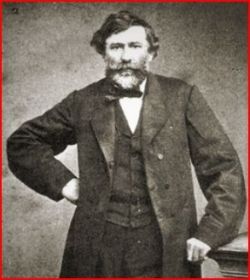
Buena Vista Winery-Better Than New-Historic Wine Caves
Nice to see the Jean-Charles Boisset efforts at restoration of the old winey.
To set the stage let me start with a quick background. A few years ago I met Donald Magorian, a much understated guy, who is probably the premier wine cave builder in Napa and Sonoma. By education and training he is a geologist and it was from that background he explained to me the process of digging wine caves. I became fascinated with caves in wine country. So, when I found out that Buena Vista Winery in Sonoma was restoring their wine cave I started looking into their project. Old caves are rare and fun.
Don told me about the economics of wine caves for wineries; the eco friendly benefits of wine caves; and, the required expertise to get a fully functioning cave finished in a part of California with earthquakes and different soil conditions.
In 1861, Buena Vista Winery was the first winery to have a man-made cave dug. I decided to visit the winery and sure enough they have an historic cave; you can see the marks from Chinese laborers' picks on the walls of the cave. It is only fitting that the renovation of the old abandoned caves at Buena Vista Winery get some recognition as the Winery has been designated a California Historic Landmark.
Known as The Champagne Cellars (however, no sparkling wine is made at Buena Vista Winery), the cave had been dormant since 1989 and was in a great deal of disrepair. Without restoration the cave could not be used.
I do not want the story about an historic winery and wine to take on a commercial focus but there are some important "firsts" when talking about Buena Vista Winery, other than the wine cave. For example:
- Oldest commercial California winery. Founded in 1854 by Hungarian émigré Agoston Haraszthy de Mokesa .
- Started the concept of blending wines from different varietals.
- Experimented with various terroir concepts such as: planting orientation, density planting of vines, working with various soil conditions and yield management.
- They had the First gravity flow winery.
- Experimented with the first redwood fermentation barrels.
It would be appropriate to recognize Haraszthy for being the founder of the California wine industry, for he was a big proponent of California developing a state school to focus on viticulture, he studied root stock and was responsible for bringing to America more than 480 varietal vines from Europe and wrote a highly acclaimed book about winemaking. Now, 200 years since his birth and 162 years since he founded Buena Vista Winery, just look at the concepts he initiated that are now considered mainstream in the wine industry. Even UC Davis and other schools in California are studying and advancing the concept of making better wine; some started by The Count of Buena Vista.
Haraszthy's contribution to wine was in building the first commercial winery in Sonoma. But, a good friend of his was Charles Krug who built the first commercial winery in Napa. Together they and their sucessors have survived disease, wars and Prohibition together to have both labels survive to this day.
Boisset Family Estates bought Buena Vista Winery in 2011 and immediately set about restoring many of its iconic features-the wine caves being the most obvious. They spent approximately $1 million one the facility, not just the caves.
The President of Boisset Family Estates is Jean-Charles Boisset, who comes with a pedigree in the wine industry from Burgundy France. Today they own 10 winery properties in California.
I would suggest spending some time and taking a look at the Buena Vista Winery. If you like history and wine it should be interesting to let them show you how much work and money goes into restoring old buildings and caves. Bringing them up to code is expensive and requires a lot of pride in a great company.
Leadership in the wine industry is hard to initiate sustain and Buena Vista Winery is continuing to move ahead. They are also focused on organic and sustainable vineyard and winery practices. This is a very big deal because the standards they have subscribed to are the most stringent-Demeter International Biodynamic® certification. This is a very big accomplishment and requires a major commitment.
Oh, by the way, old Agoston Haraszthy can be seen around the winery on occasion in the person of Mr. George Weber who is a local actor and historian who also have a great love of wine history and California Wine Country.
Resveratrol Discussion Keeps on Giving
Supplements are better.
Recently more research came out that explained and defended the benefits of resveratrol as found in red wine. As we know, resveratrol is in the skins and seeds of red wine grapes. OK, there is some resveratrol in white wine grapes be so minimal as to not make it worth discussing.
The discussion now turns to what is the generally accepted dosage that a person needs to get the benefits of resveratrol. The University of Maryland has suggested a daily consumption of 25mg to 150mg. Reading labels of some resveratrol supplements indicate dosage of 20mg and higher. Red wine is not the only source of resveratrol, the highest concentration seems to come from knotweed (a plant).
A liter of red wine can yield about half of the minimum dosage most people accept. So some people have gone with supplements in addition to a nice cab. A month supply generally can run around $40-$50. Of course price can depend on other components of the capsules. Some manufacturers add other ingredients with a strategy that a more complex ingredient list on the label makes the product seem better.
Side effects of resveratrol seem to be minimal. The fact that resveratrol is certified as a GRAS ingredient is some indication as to its safety.
As always, check with your doctor before going a regime of resveratrol. I did not check with my doctor before drinking wine however.
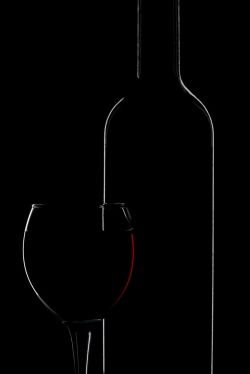
Here's to your health--take that literally! Oldest stays fresh.
Love good news about red wine.
The oldest beverage besides water from the Nile is wine. And the benefits of wine keep giving us wine drinkers hope. On August 19, at the American Chemical Society meeting, Dr. Cavenaugh of Duquesne University noted that her research on resveratrol showed great benefits for senior citizens; seems that this compound, found in the skins of red wine grapes, can benefit seniors in improving their mobility.
This comes on the heels of other research on resveratrol, a powerful antioxidant that indicates that resveratrol may be great for the heart, immune system, and work as an anti-aging supplement. This polyphenol is also found in blueberries and red skinned fruits.
Dr. Cavanaugh thinks that resveratrol works in the brain by protecting the brain cells from the destructive effects of dopamine. It appears that resveratrol mitigates the damages done by oxygen free radicals, generated by the breakdown of the dopamine.
Antioxidants by definition work to preserve cell balance as free radicals are generated in the normal course of activity.
Wine May Be The Most Ancient Of Drinks But It Is Still Debated
Drink Wine For Thy Health...From the Bible
It appears there is a debate as to the actual date of recorded mention of wine. Some note that wine was developed around 4,000-6,000 BC. We know the Romans exported wine to Germany, Spain and England in about the 100 AD. The oldest bottle of wine uncovered from the Roman Empire dates back to about 325 AD. Actually, most speculate that wine was discovered and consumed purely by accident...unused grapes that started fermenting on their own.
Depending of ones religious background, wine is looked upon as a scourge upon the earth, to being associated with Joy, Health, Symbolism, Rejoicing, and Feasting. We probably don't need to be reminded that Prohabition
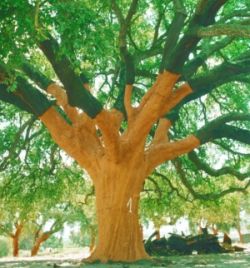
Cork...To Be or Not To Be
Are you against change and revolution if you still like corks?
I belong to a wine discussion group and occasionally someone in the group will bring up the subject of aluminium screw caps versus cork. I must say before I tear into my diatribe on the subject, a friend of mine is Peter Weber of the Quality Cork Council in Sonoma. Quality Cork Council does cork research and represents cork manufacturers in the U.S.
The discussion about cork seems to center around two issues--convenience of screw caps and TCA (cork taint). Let's dispense with the argument about screw caps being convenient; I will agree to the limited nature of convenience. But, screw cap convenience must be weighed in the totality of the wine experience and therein lies the problem: convenience in totality probably represents maybe 1% of my desired wine experience. From a viewpoint of sustainability, aluminium is not in the same league as cork which is a renewable/sustainable product.
Cork is primarily from Portugal (but not totally). The tree that cork comes from is a species of the Oak tree family and is totally renewable. So the sustainability issue should be put to rest as the harvest is purely a manual process. Cork also adds to the aroma of the wine as wine continues to be exposed to the Cork Oak tree bark.
The TCA issue is real, but the percentage of cork taint rate has been measured at 0.7-1.7%. It is actually, for the untrained and people not having real sensitive olfactory capabilities, hard to pick up on TCA in smell or taste. By the way, synthetic closures can also have a taint called sulphidisation. But the point is, TCA issues are constantly being addressed by the quality controls in the industry to maintain a sterile product. Lastly, recognize that wineries can get a taint form a number of sources-hoses, pollutants, gaskets, etc. Well, with all the myriad types of taint, wineries are always careful about TCA's.
In all the wine I have consumed I have found only one instance of that musty smell and taste in a wine.
We all have different relationships with our wines. These relationships are often based on the occasion/event, season, companions, memories associated with a certain aroma and, unfortunately, recommendations via reviews and point ratings. Whatever the basis for our love of wine it all starts with experiences--past and present.
Personally I love how corks reinforce the experience of wine:
1. The tactile aspects of the cork in your hand when you first pull it.
2. The color of the red on the end of the cork (I'm a red wine drinker).
3. The sound when the cork pop's out.
4. Lastly, I like putting a cork in a trivet or in a box and on occasion looking at the winery name printed on the cork and remembering the wine. That is fun. I even write on the cork the date and occasion I drank the wine.
Tradition is the cork experience. A twist cap is just as convenient as a cardboard box of wine. But convenience is not what wine is about, if it is then present a box of wine with a mylar bladder inside to the hostess of a dinner party you are invited to attend.
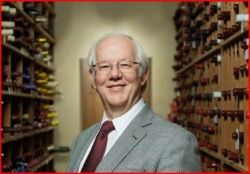
Yeast That Makes Wine Better
Making wine is still art but science is the back-up position
New Yeast Research
On July 12, 2012 the University of British Columbia's Wine Research Centre announced the results of 15 years of research on how to prevent red wines from causing allergic reactions in 30% of the wine drinker population. This successful research was led by Dr. H. van Vuuren-Director of the Wine Research Centre in Vancouver. The negative reactions from say a Merlot or Syrah can be manifested by the drinkers having headaches, terrible hangover feeling, rashes, etc., brought on by compounds found in most red wines. I must admit to being one of those, but managed to control it by limiting the amount of wine I drank-yes, I do love wine in spite of the reaction.
This breakthrough research has a direct impact on wine lovers and winemakers alike; it minimizes ,if not eliminates allergic reactions to wine and the solution to the problem is easily implemented early in the process of making wine. And this simple solution is lies in the designator--"ML01", a genetically modified yeast used in wine making that not only eliminates the molecules that causes the allergic reaction, such as headaches, but also vastly simplifies the production of wine.
A new yeast for wine making is a big deal. Currently there are 2 basic species of yeast employed by wineries: Saccharomyces cerevisiae (for reds and some whites) and Saccharomyces banyus (sparkling wines). Within these two species there are 50 plus strains commonly used in wine making. We all know that yeast occurs naturally in the atmosphere and is found on the skins of grapes. But, specific yeast strains are utilized by today's winemakers to enhance and "bring forward" desired colors, aromas, flavors and mouth feel attributes of each specific varietal.
Yeast turns the sugars in the "must" (juice, skin and seeds) into alcohol and then lactic bacteria is added (secondary fermentation malolactic conversion) to give wine a less acidic character and make it more stable. So, we have yeast and bacteria in the wine making process. This new yeast strain has been approved in Canada and by the FDA as being safe and is therefore recognized as "GRAS" certified-Generally Recognized As Safe. With California generating $18.5 billion in retail wine sales in 2010 this new yeast will allow for more wine sales to people who otherwise enjoy wine but want to avoid allergic reactions.
Yeast's can be bought that will yield many different results in a wine. For example, there are yeast's specific for reds, whites and rose; for late harvest grapes; for coloration; fermentation speed; alcohol tolerances; and the attributes go on and on.
As an aside, Dr. van Vuuren has a patent application for new yeast that can control alcohol levels in wine without any adverse effects on the taste and aromas of the wine. Ultimately, the message is : A as old as a beverage like wine may be, it is still complex and ever changing thanks to science applied to a simple thing like yeast.
The Genome Chardonnay Research
In the simplest form for the explanation of genome research, it is all about defining the DNA of a reproduced organism; in our discussion it is about wine grape vines. In the specific case of the Chardonnay vine there are about 16 species of Chardonnay. The DNA of each species of the Chardonnay varietal is now being mapped. The results can then be used to advise vineyard owners as to what Chardonnay varietal is best suited for a specific region.
Here is just a small sample of what researchers are now being able to define as attributes of some of the 16 individual Chardonnay DNA (the numbers are the genome markers):
- I10V1 --widely planted in the New World, same parent as I10V3 and I10V5, ranked highly on quality criteria, later ripening, and flavor maturity at higher sugar.
- I10V3 --widely planted in the New World, later ripening, flavor maturity at higher sugar, same parent as I10V1 and I10V5.
- ENTAV INRA 548 --widely planted in France, small, loose bunch sizes, ripens late.
- ENTAV INRA 809 --widely planted in France, high quality, high levels of linalool (alcohol ester with a scent) production.
- ENTAV INRA 1066 --small bunch sizes.
- Dijon 76 --low-yielding, higher sugar production than Dijon 95 and Dijon 96, flavor ripening at lower sugar, now grown in preference to I10V series.
- Dijon 95 --low-yielding, more aromatic than Dijon 76, flavor ripening at lower sugar, now grown in preference to I10V series.
Wine making will always be an art, however more of the art will use a component of science. The application of new genomics research is uncovering fundamental gene functions in wine grapes and yeasts. This research is bringing improved capabilities to the winemaker that improves consistency from season to season. Viticulturists are able to monitor the vine and production that is impacted by environmental changes.
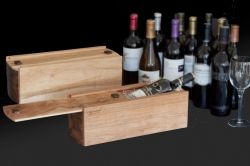
For Further Enjoyment Of Wine--Stand Up To Wine Snobs!
Information adds to the enjoyment of wine.
We all recognize some people are wine snobs; always trying to impress others with their wine knowledge (or self proclaimed knowledge) and/or trying to imply you are stupid when you use your own "wine language" to explain your views of a wine (they try correcting you passively). When I am around such people, who do not respect my opinions and the way I verbalize wine descriptions, here is what I say to them after they try putting me down: "That's a nice opinnion you have of this wine, but I need to think about your opinion through another glass or two. I prefer a final opinion through a prism of a food pairing." Something said like this says that you do not fully accept the other person's views (the snob) fully and you reserve your final opinion at your own pace.
So here is a recommendation to really appreciate any varietal. This approach to personal evaluations of wine will also give you a superior perspective to wine evaluations and opinions while not being subjugated to wine snobs. Try these:
1. Do some online research on the various varietals. Find out the orgin of the vine, how it has developed, where are the primary growing regions and any relevant facts on ratings. This information is readily available on-line and if you are inclined in any way toward history it is information that is fun to know. With 2,500 varietals of wine grapes you can be busy for a long time. It is hard to argue facts; so come to tastings or wine parties with facts.
2. Know the aromas of different varietals. Smell the wine in light of the various winery description on the bottles of aromas and compare those to the historic profiles you found in your research. Then come up with your own descriptors. The winery arrives at their aroma descriptions that go in the labels by using employees to write their own views of aromas. So your opinion has every bit as much weight as a winery's employees. Every wine can have different aroma profiles based upon winemakers and appellations.
3. Flavors are like aromas. Personally, I like aromas more than the taste, albeit very slightly! Here again your opinion on flavor notes are equal to any other persons. Realize however that each varietal has its strong suits of standard flavors--you probably will not find 'green apple' flavors in a Cab.
4. Color is one of those senses that is a pretty much universal; red is red and plum red is a little flatter and darker, and so on. Call it as you see it.
5. Opinions about wine's are like noses-everybody has one. Hold your ground, your opinion is just as valid and James Laube. The exception may be if you seek the counsel of a Master Sommelier, then value his opinion for guidance only.
That's my opinion and it may be worth exactly what you paid for it. So, take in whole or parts...your choice.
Vines Have A Heritage...called clones
Schafer Cellars has produced several 100 pts. wines. They have gone so far as to buy grapes from specific clones.
One of the oldest beverages is always new!
The headline from The Telegraph is: "Two glasses of wine per day may help improve quality of life". More good news!
Probably the first real example of someone using wine research to promote the health benefits of wine was Robert Mondavi. In 1991 CBS aired a story about the "French Paradox", which basically stated that the French, with high fats in their diets, had less heart disease and that benefit was primarily due to red wine consumption; red wine consumption then exploded in the U.S. This reporting came from research out of Bordeaux University and was authored by Mr. S. Renaud. The same university where Dr. Jack Masquelier conducted his famous research on the anti-oxidant values of grape seed extracts in 1948.
The anti-oxidant in red wine, grape skins and grape seed is principally resveratrol. There are many attributes of resveratrol for cardio vascular health, anti-aging and others. Some researchers have said that there is value in moderate consumption of alcoholic beverages when limited to 2 drinks per day. Even that assumption has some detractors.
Herein lays the crux of the problem in discussing this subject. For example, how solid is the research? Are the benefits of red wine only two drinks a day to have beneficial effects or can it be three? The point being: time, place, circumstances and parameters of the research can and do give varying results. Don't forget, five years ago doctors said to limit coffee intake to 2 cups per day and now it is reported that coffee has many benefits and drinking 4-5 cups per day have great value. Coffee benefits are just one example of just how fickle research results can become. Go figure.
The latest study which comes out of the Boston University's School of Medicine indicates that "investigators concluded that regular moderate drinkers had higher initial levels of health-related quality of life than abstainers and those in other groups." Mr. Harvey Finkel of Boston University goes on to imply that the benefits of wine consumption have benefits beyond anti-oxidants. The implication is that wine consumption has benefits, as we age, by providing a social aspect to enjoying company and imbibing in wine with friends.
It is known that we live longer by maintaining a productive life as we age and being surrounded with friends that we associate with on a regular basis. More to the point, "wine makes us civil". We are in the process of conducting some research on the social aspect of wine. The premise of the research is that wine has a social aspect not inherent in other beverages. Remember what was said earlier, all research brings some bias that is has some flaws. But, I still find wine so complex that it challenges all human senses. OK, wine may be an old drink but it is still new at every bottle.
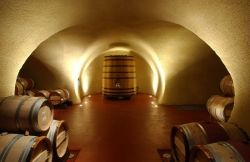
Wine is after all a business!
Learn the Business of Wine
I was talking with some people from Sonoma State University about their wine education program and discovered that their approach is to focus less on the science side of making wine and more on Wine Business Management. Checking with the course offerings at some other universities I notice that they do offer some courses about the front-end or commerce side of the business but the real focus is on the chemistry of viticulture and enology. Sonoma State University in Sonoma County is now offering course work that will lead to a Certificate of Wine Business Management that covers such areas as (but not the total list):
Import and Export
Branding
Hospitality
Management Succession Planning
Finance
Distribution
E-Commerce
Regulations (Federal, State and local)
Strategic Planning
Sustainability
If you want to continue in their Wine Education program, a successful completion of the certification course work will have 1 year of the 2 year MBA program credited toward completion of the MBA.
I like this approach to executive training as it allows people interested in the business to more fully understand the business issues before they decide to take the plunge. Like a lot of businesses, the romance and personal love of a business or industry can bring on a lot of heartache if a person does not do their homework (no pun intended).
There are 3 modules of course work to get the final certificate and the total cost can run about $3,000 over 18 months of on-line work. But, you do not need to take all of them if you are not interested in getting a certification; pick the one you want. The introduction module is about $550.
Wines in other areas of CA
But please, I am not looking for a wine that may someday be 25%
Let me add to the point I made earlier in this Lens.
About a week ago I made a sales trip into the Loomis, CA area to meet other winemakers away from of Napa and Sonoma. There are some great wines around this area, but what impressed me most is their openess and being so friendly. They wanted to talk about their wines and ideas for future wines. Different than Napa and Sonoma where you can't almost walk between wineries; they are far apart in Loomis, but they are noticeablly more friendly. In the late 60's Napa and Sonoma wineries were so welcoming and that is the way these inland wineries are today.
Having said all of that I tasted my first 16.5% ABV wine (as labeled). As I said previously, I am not a fan of high alcohol wines. By law this wine could actually have been almost 18%; way to high for my taste (no pun intended). I could not enjoy a nice glass of this wine while watching TV because of this high alcohol. I was feeling the effects almost instantly. The wine as "hot" (not the temp) becasue it simply could not breath. I even tried aerating it.
So what's my beef? Stop the insantity of high alcohol wines. Give me nice aromas, complexity, some tannins, richness of flavor that stands out, something that leaves a nice finish in the mouth and do all this at 13.5% ABV. Remember, even the labeled 13.5% can actually be about 15%.
Cheers!
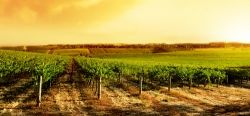
Love The Red Wine, But Is 15% Alcohol A Little To Much?
ABV is getting up there and is a bad trade-off for flavor!
For the past decade I have watched the alcohol content of wine increase but when wine started being consistently above 14% I tended not to enjoy it as much. In discussing this with a winemaker friend of mine at a large winery in Sonoma County, he said that full bodied red's needed the high alcohol content to bring out the flavors of the fruit. We understand that higher alcohol levels do present a dryer and more complex wine, but is 15% alcohol all that necessary? For me, I now pay attention to the ABV (alcohol by volume) number more closely.
Here are the negatives of high alcohol wines:
- The wine needs a longer time to open up to let the real aroma's bloom,
- To the nose I get a lot of alcohol vapor effects that are unpleasant; I call it a "hot" wine, and
- High alcohol content takes away from a relaxing time with a wine, a time to relax and smell the wine, enjoy tannins, and taste the fruit.
I almost enjoy the rich bouquet of a red wine to simply consuming the wine; the operative word here is 'almost'.
The alcohol in wine is ethanol and it comes from the yeast breaking down the sugar in grape must. The source of the sugar is in the grape which is about 20% sugar and the rest is water. This whole process of making wine is really about controlling the process of turning grape must sugars into wine and that is really a process of controlling how the yeast reacts with the must. The process of making wine is complex as witnessed by the plethora of books on winemaking and the reason for major universities offering wine chemistry courses. Sufficed to say it is a very complex endeavor.
The subject of yeast is a whole other discussion. It is a science that goes back more than 5,000 years. But it was in the 1860's that yeast was discovered to be a living organism. It is known there are more than 500 species of yeast and thousand's of strains. Yeast strains are ubiquitous; they grow naturally and are actually present on the skin of grape in the vineyard. Of, the thousands of types of yeast there are about 16 used in winemaking. These yeasts are used to control fermentation processes (converting sugar to alcohol), manage flavor profiles, and manage unwanted natural yeasts.
There seem to be three ways for the winemaker to control the sugar:
- In the winery where the winemaker manages the targeted levels,
- The vineyard process,
- Harvest timing.
It seems like the whole winemaking process is a fine line between science and art. Some of the variables that control sugar levels (that ultimately can determine alcohol content) are: orientation of the vineyard, irrigation (especially in the final days before harvest), topography, canopy, and density of the vines. Ultimately, the hidden secret lies in knowing when to pick the fruit. Coming to the end of the growing cycle is when sugars are really being generated in the fruit. Even hours can make the difference in perfect timing.
To synthesize all of this, simply put, sugar is the determinant in how much alcohol is in a wine and that is governed by the interaction of yeasts on the sugars.
As stated earlier, high alcohol wines are troubling for some folks. For this reason there are some wineries that are looking at ways to bring down the alcohol content yet keeping the attributes of the wine that led to the gravitation to higher alcohol levels in the first place.
There are ways to control alcohol already (besides controlling sugar), but these methods add processes to winemaking and thus add costs. For example, wineries can utilize a form of dilution, change yeast varieties, use mechanical filtering processes, use a reverse osmosis method and, in the future, exploring genetically modified yeast strains.
There is a lot of research underway to develop yeasts' that have a performance profile that react with sugars in the fermentation process to control alcohol levels. However, like any material that is genetically engineered, there will probably be a strong headwind in the wine industry that tries to fool Mother Nature. This is mentioned only to show the science of winemaking is intense and ongoing.
Last point is: When you look at a label and see alcohol by volume-ABV, this is nothing more than a universal measurement relating the amount of ethanol compared to the total volume of contents in the bottle. Because alcohol is lighter than water, the ABV approach is really the most efficient way to express the ratio of ethanol to the total contents of wine in the bottle. Whatever the ABV label states, the TTB (Tax and Trade Bureau) has a leeway of 1.5% allowable when stating an ABV amount the label. Therefore, a label that shows an ABV of 14.5% may actually be 16.0%.
One exception, a bottle of wine labeled as-Table Wine will generally not have an alcohol content noted. But, the recognized level of alcohol is between 7% and 14%.
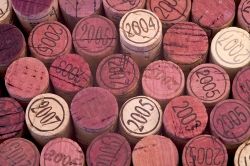
The many facets of red wine
Grape seed extract
Here's to Your Health
Much has been written about the benefits of wine. An article appeared on January 6, 2012 substantiating some prior disputed research results that red wine does have a positive effect on reducing risk of breast cancer in women. As late as six months ago there were researchers believing wine was not good relative to breast cancer. However, this latest research came from Cedar Sinai Hospital and supports other research that red wine does reduce breast cancer risk. But this isn't the first such news about the benefits of wine. It isn't just any wine but red wine in particular.
In the 1950's a guy by the name of Dr. Jack Masquelier started looking for more potent anti-oxidants in plant material. Because he was from Bordeaux, France he started experimenting with grapes as a new source to extract what are OPC's, we also call them anti-oxidants. Anti-oxidants go after free radicals in our cells and render them harmless. Free radicals are part of the aging process of cells being destroyed by oxidation; not good. When we are younger our body naturally produces anti-oxidants, as we age that capability diminishes. Oxidation effects come about from most everything; exercise, sun and foods are three. As cells change due to oxidation it is called mutation.
Dr. Masquelier was the researcher that found the benefits of grape seed extract as a source of small flavanols, or anti-oxidants, present in red wine and specifically red wine seeds; the active compound in red wine (OPCs). What is truly interesting about grape seed extract is that it has great applications in both nutritional as well as topical products.
All wine drinkers have heard of the "French Paradox". Robert Mondavi is the guy in the U.S. that really marketed the health benefits of wine. The French, with a diet filled with saturated fat and cholesterol, have the lowest rate of heart disease of any western society-nearly half that of the U.S. The theory was the red wine the French drink. Specifically, the anti-oxidants concentrated inside the grape seeds made the wine rich in anti-oxidants. In fact, guys like Jack Masquelier, believed that red wine is more healthful than white, since most red wine is fermented with the seeds and skin while white wine is not.
Resveratrol is an anti-oxidant compound in wines and especially red wine and is found in the skins. The grape seed extract renders far more powerful benefits. But sufficed to say the benefits of wine are profound-everything from reduced cancer risks, anti-aging, circulatory, eyes and skin; all can benefit from drinking red wine.
In the U.S. there are two giants in the wine industry that use virtually all of the left over products in the manufacture of wine. The by-products are the grape skin and the seeds. Luckily the seeds are the most potent of the by-products and are most sought after to make grape seed nutritional supplements. The best is San Joaquin Valley Concentrates (a Gallo Wines company) and Polyphenolics (a Constellation Wines company).
Don't let the benefits of wine end with the sip. More often than ever you are seeing grape seed extract making its way into skin care products. As the sun oxidizes skin cells and produces free radicals, logic tends to indicate that the anti-oxidant free radical scavengers from the phyneols of grape seeds can work through the skin also.
I once ask a cardiologist friend of mine: "is it possible to get too much phenols/anti-oxidants per day?" My theory is that if a little is beneficial than a lot more is better. No, he still says 8 ounces a day is his recommended limit.
There are literally hundreds of compounds in a glass of red wine. As wine ages the number of compounds change into more complex molecules, then add to that the effects of oak compounds. Don't take the value and complexity of wine too cavalier. This drink has been around since the beginning of civilization and until about 1960 we did not know the health benefits and the magic of wine. In fact, the discovery of resveratrol did not come about until 1990.
Here's to your health!
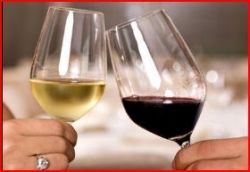
Red Wine Help's Reduce Women's Breast Cancer Risk
Eventually I guess we will believe some good news.
The study, published online in the Journal of Women's Health, challenges the widely-held belief that all types of alcohol consumption heighten the risk of developing breast cancer. Doctors long have determined that alcohol increases the body's estrogen levels, fostering the growth of cancer cells.
But the Cedars-Sinai study found that chemicals in the skins and seeds of red grapes slightly lowered estrogen levels while elevating testosterone among premenopausal women who drank eight ounces of red wine nightly for about a month.
White wine lacked the same effect.
Researchers called their findings encouraging, saying women who occasionally drink alcohol might want to reassess their choices.
"If you were to have a glass of wine with dinner, you may want to consider a glass of red," said Chrisandra Shufelt, MD, assistant director of the Women's Heart Center at the Cedars-Sinai Heart Institute and one of the study's co-authors. "Switching may shift your risk."
Shufelt noted that breast cancer is the leading type of women's cancer in the U.S., accounting for more than 230,000 new cases last year, or 30 percent of all female cancer diagnoses. An estimated 39,000 women died from the disease in 2011, according to the American Cancer Society.
In the Cedars-Sinai study, 36 women were randomized to drink either Cabernet Sauvignon or Chardonnay daily for almost a month, then switched to the other type of wine. Blood was collected twice each month to measure hormone levels.
Researchers sought to determine whether red wine mimics the effects of aromatase inhibitors, which play a key role in managing estrogen levels. Aromatase inhibitors are currently used to treat breast cancer.
Investigators said the change in hormone patterns suggested that red wine may stem the growth of cancer cells, as has been shown in test tube studies.
Co-author Glenn D. Braunstein, MD, said the results do not mean that white wine increases the risk of breast cancer but that grapes used in those varieties may lack the same protective elements found in reds.
"There are chemicals in red grape skin and red grape seeds that are not found in white grapes that may decrease breast cancer risk," said Braunstein, vice president for Clinical Innovation and the James R. Klinenberg, MD, Chair in Medicine.
Provided by Cedars-Sinai Medical Center
Great Stuff on Amazon - Fun reads that are human interest and history
Books I like about wine country and the people who made it and make it today.
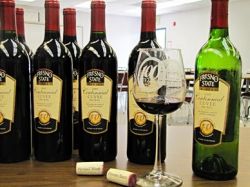
Wine Research
There is a lot of research to make wine better.
Wine and grape research projects are endless.
This research isn't shrimp on a treadmill!
Two universities in California are known for research in Viticulture and Enology-UC-Davis and CSU-Fresno. But who funds this research? Who owns the results? What are some interesting subjects that are being researched?
1. Most research projects at the university level are funded in two ways; companies that have a specific need for information and commodity groups (Associations and Foundations). The latter group are often trade associations whose members, through dues, have a 'pot' of money set aside for worthy research projects. Researchers at institutions of higher learning, or even private researchers, present their aspirations and ideas to the foundations or associations for funding. Based upon what is call "strength of proposals", these funding groups may sponsor certain research.
2. In the case of public universities the research information belongs to the public, no matter where or from whom the funding comes.
3. Some of the more interesting research I have followed lately includes: mechanizing the picking of grapes, forced cropping, wine quality and the impact of tannins on wine quality. Forced Cropping is interesting because it is a novel idea from Dr. Gu of CSU-Fresno on how to grow quality grapes in hot climates. Basically, the theory is to force the vine to hold off producing fruit until the time of the year when days are warm (not hot) and nights are cool and breezy.
Part of this research also involves varietals, canopy studies and trellising.
Bottomline, if you like your wine just think about all the researchers that worked on it. Ah yes, I almost forgot, CSU-Fresno owns their own vineyards and a bonded winery.
Something new about something old - Benefits of wine
Herein are the benefits of red wine. We know this but the review is still fun.
- Benefits of Red Wine
Video explaining benefits of wine



